Read more of this story at Slashdot.
Ronald.phillips
Shared posts
Larry Magid: Utah Bill Threatens Internet Security For Everyone
Robert De Niro Is The Best Actor Ever
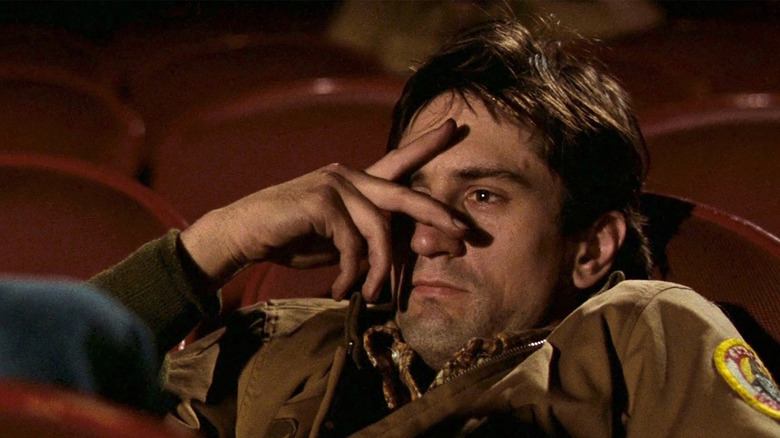
When Robert De Niro came out swinging, rhetorically, at Republican presidential candidate Donald Trump in 2016, it was the most stirring and surprising performance he'd given in years. "He's so blatantly stupid," he said in a campaign ad. "He's a punk. He's a dog. He's a pig. A con. A bulls**t artist. A mutt who doesn't know what he's talking about." Then he lowered the boom: "I'd like to punch him in the face."
Though the actor had long been on the record as a Democrat, he'd never been this emphatic about a political position in his public life (there was his unfortunate dalliance with quackish anti-vaxxer theories, but he took a non-committal position on the actual science). In fact, he'd never been emphatic about much of anything. Anyone who'd watched the actor squirm his way through an interview knew full well that the man wasn't much of a talker. When he did speak, he tended to be soft-spoken. He seemed almost embarrassed to be holding forth on any subject, even acting. He did not come off as a man who believed in himself.
De Niro's discomfort in a press setting gave us permission to not dig too deeply into his private life, and I happily kept my distance. De Niro is a method-acting burrower. Watching him alter his appearance, physical bearing, and speech from film to film is a magic act. I didn't want to know how he did it, I just wanted to see him do it. So while I certainly agreed with him about Trump, I was also strangely disappointed that his carefully maintained facade had fully crumbled. It felt like one of filmdom's most intriguing enigmas had been solved.
The Breakout
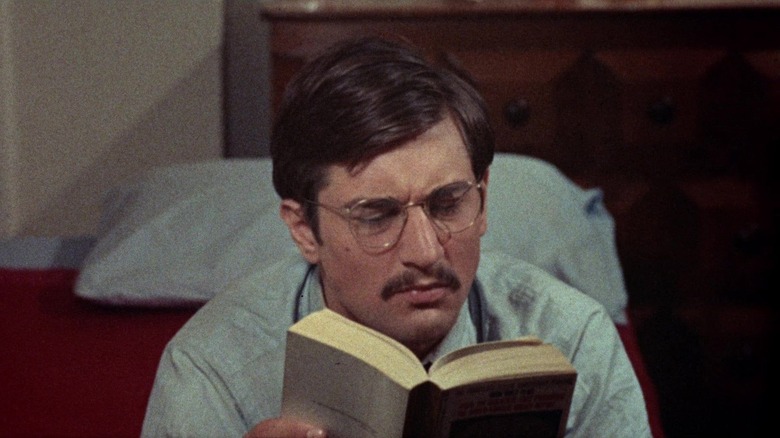
In 1963, Sarah Lawrence theater professor Wilford Leach set out to make a film with two of his students, Cynthia Monroe and Brian De Palma. Many of the actors cast in the movie traveled in the same creative circles as the directors, which allowed a young De Niro to stand out. "Nobody knew him," said De Palma. According to Glenn Kenny's "Anatomy of an Actor: Robert De Niro," the actor auditioned with an improvisation for Clifford Odets' "Waiting for Lefty." "He went out and then came back in like a powerhouse," said DePalma. "He came on like Broderick Crawford — reading a speech to the cabbies in the union hall. He was simply great — that I remember."
De Niro landed the role of Cecil in what would become the French New Wave-influenced comedy "The Wedding Party," which, while shot in '63, wouldn't receive a theatrical release until 1969. That it was released at all was due to the cult success of De Palma's second feature-length film, "Greetings." This sporadically hilarious counterculture satire stars De Niro, Gerritt Graham, and Jonathan Warden as a trio of Greenwich Village eccentrics desperate to devise ways to avoid getting sent to Vietnam, and it benefitted commercially from the anti-war protests and the furor surrounding the 1968 presidential election. But it's not an angry film. De Palma pokes fun at everything from the conspiracy theories provoked by the Warren Commission's findings to the advent of computer dating.
De Niro's character is something of a funhouse mirror surrogate for the director. He's an aspiring filmmaker whose voyeuristic tendencies cross the line into straight-up peeping Tom territory. De Palma's self-critical examination of voyeurism would become a career-long fascination, but De Niro's blank-slate nature imbues his character with quiet menace. He's not idealistic like Keith Gordon's resourceful teenage hero in "Dressed to Kill," nor is he amusingly pathetic like Craig Wasson's struggling actor in "Body Double." He's distressingly comfortable with his transgressive kink.
De Niro Eschews The Stage
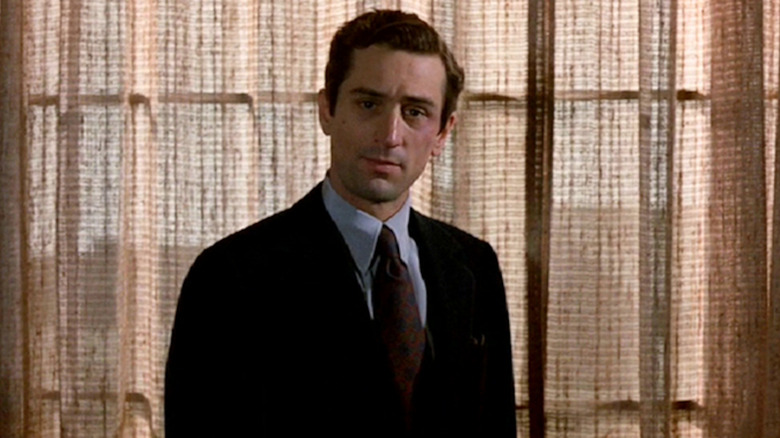
There was no avalanche of plaudits for De Niro's work in "Greetings," nor for his equally unnerving turn in De Palma's jolting follow-up, "Hi, Mom!," but the actor's unnerving gift for shunting us onto the malfunctioning wavelength of damaged, dangerous misfits was darkly blossoming in these movies. The times were changing and so were the movies, and there wasn't an actor more attuned to the country's haywire frequency than De Niro.
Unlike many of his celebrated peers, De Niro does not have a New York City theater origin story. He studied at Lee Strasberg's Actors Studio and the Stella Adler Conservatory, and received high marks from both. But he went straight into movies, and, to date, has only one prominent Broadway credit (via 1986's production of Reinaldo Povado's "Cuba and His Teddy Bear"). When American theater legend Elia Kazan directed him in 1976's "The Last Tycoon," he praised De Niro's uncommon commitment to rehearsal. So why has De Niro sedulously avoided the stage? Perhaps because he was too busy redefining film acting, and he knew it.
De Niro Hits His Prime
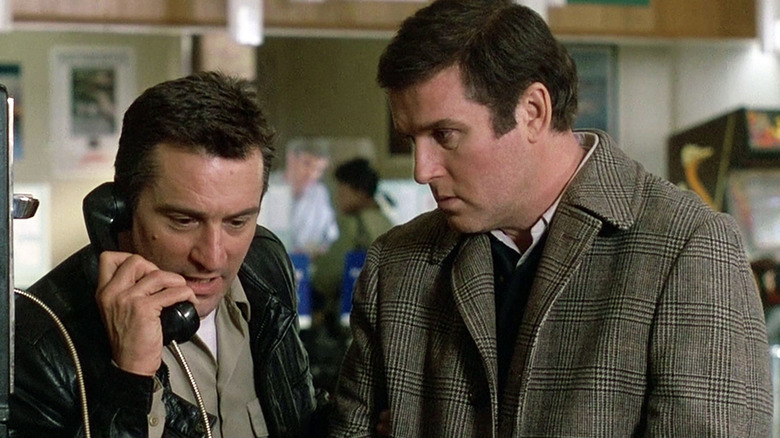
After earning praise for his portrayal of doomed, dim-witted pro baseball catcher Bruce Pearson in "Bang the Drum Slowly," De Niro hooked up with Little Italy-born auteur Martin Scorsese for "Mean Streets." As Johnny Boy, the reckless albatross of a best friend to the conflicted Charlie Cappa (Harvey Keitel), De Niro threw a vicious charge into every scene. Francis Ford Coppola, who'd tried to cast him in "The Godfather" (De Niro took a part in "The Gang That Couldn't Shoot Straight" instead), landed him as the young Don Vito Corleone in "The Godfather Part II." De Niro earned his first Academy Award nomination for his portrayal and won.
He reunited with Scorsese in 1976 for "Taxi Driver," which cemented his status as his generation's Marlon Brando. But there was nothing dangerously sexy about De Niro's Travis Bickle — or any of his 1970s characters, really. His affinity for emotionally stunted antiheroes was threatening to edge into self-parody during the 1980s until he committed to Martin Brest's buddy comedy "Midnight Run." This was the departure that saved his career. His comedic timing is spot-on, and his chemistry with Charles Grodin's mob embezzler is lightning-in-a-bottle perfection.
This cracked everything open for De Niro. Maybe too open. He worked more readily, but also leaned into unearned histrionics. There was a slump on the horizon.
The Slump And The Slumpbuster
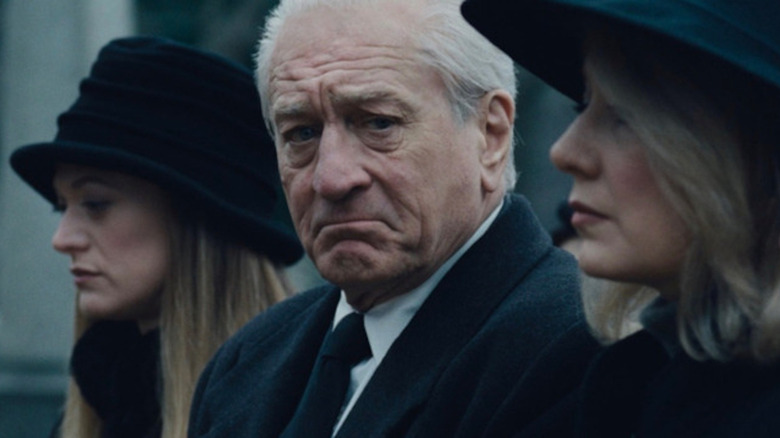
De Niro took a lot of critical grief for his early 1990s choices, but he was being judged against his own brilliance. He was way too much actor for some of these parts (e.g. as the arson investigator in "Backdraft" and the conscience-stricken priest in "Sleepers"), but he's sensational in "Cape Fear," "Mad Dog and Glory," and "Heat." His portrayal of stoner criminal Louis Gara in "Jackie Brown" is, low-key, one of his finest performances. Here he works a variation on the introverted, shy guy De Niro we see in interviews — that is, until the angle he's working with Bridget Fonda's Melanie goes sideways. Louis abruptly hitting his breaking point in the shopping mall parking lot is a darkly ecstatic fit of violence that sends us into hysterics because we keep waiting for the De Niro to come out in this schlub.
The 2000s were a period of great prosperity for De Niro, in that he cashed hefty paychecks by turning up in garbage like "Showtime," "Meet the Fockers," and "Righteous Kill" (where he plays a game of phone-it-in chicken with Al Pacino). He recovered with a fully-engaged performance in John Curran's "Stone," and brought his A-game to "Silver Linings Playbook," "The Intern," and "The Irishman." It's frustrating that many critics harp on De Niro's physically labored beatdown of the store owner in the early going of Scorsese's film because the actor is heartbreakingly frail in the final act. Watching him lose his vitality and pick his coffin (because he has no family who cares to bury him) is a depressing compliment to the performance De Niro could never top because you can't top arguably the greatest film performance of all time.
The Defining Performance
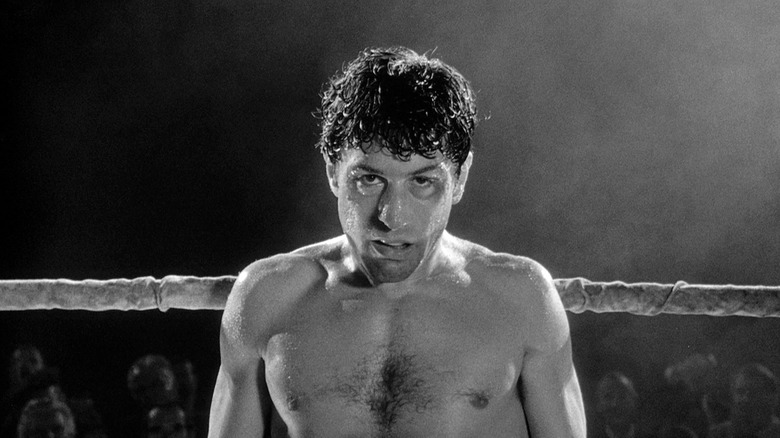
Jake LaMotta was a wreck of a human being. He was a great fighter who held the world middleweight title from 1949 to 1951. He was born to fight, to hurt people, and he did so relentlessly in and out of the ring. He did his damage in tight quarters and endured some of the most hellacious beatings in boxing history. Sportswriters who watched him in his prime say he had an iron chin. You could pulverize his face into hamburger, but if you wanted to put his lights out you better pack a lunch because it was going to take all goddamn day.
De Niro didn't just study LaMotta for "Raging Bull," he became him. His real-life subject participated in the actor's rigorous training and said he could've been one of the 20 best middleweight pugilists of all time. Then Scorsese paused the production for several months so De Niro could pack on 70 pounds to become the slovenly, showbiz aspirant version of the hateful palooka.
There isn't anything shy about LaMotta. He is loudly, disgustingly violent. He is all appetite, and he is nothing like Johnny Boy, Travis Bickle, or Rupert Pupkin. He can function within society, and did so for 95 years, even though he absorbed thousands of punches from men whose fists are essentially lethal weapons. He was a survivor who subsisted on hate. I don't think LaMotta was quintessentially American, or quintessentially anything. He was a ball of self-loathing who paid his penance in the ring but never went down. His very existence was an act of resentfulness.
Scorsese's film wears you out. It opens with De Niro bouncing out a beautiful, bulb-flash-lit solo dance to the Intermezzo from Mascagni's "Cavalleria rusticana," then backs you into the corner and busts you up until the closing credits. And you accept the punishment because De Niro, the shy kid raised by sensitive artists, is dishing it out. Where does this savagery come from? It's in all of us. Going there would destroy most of us. Maybe touching those cruel depths and pulling back provoked De Niro's disdain of Trump. And maybe he's just the man to make him kiss the canvas.
Read this next: Every Martin Scorsese Feature Ranked From Worst To Best
The post Robert De Niro Is the Best Actor Ever appeared first on /Film.
Anti-Aging Scientists Extend Lifespan of Oldest Living Lab Rat
Read more of this story at Slashdot.
Star Trek: Picard Season 3 Review: The Best Next Generation Movie We Never Got
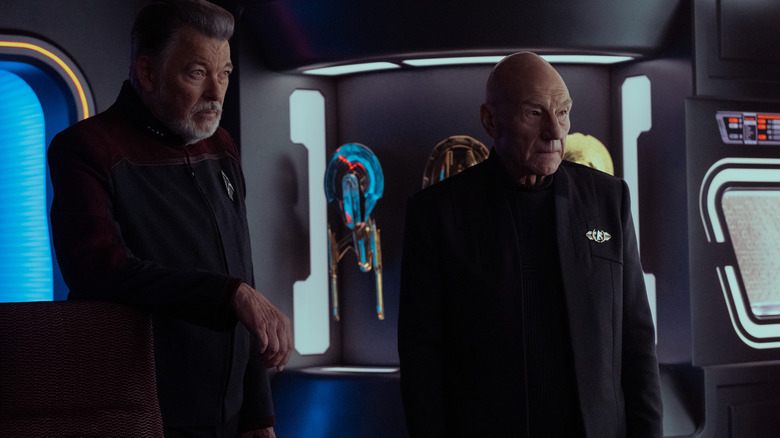
It's worth remembering, even with some of the franchise's better shows, that no "Star Trek" series started strong ("Strange New Worlds" perhaps notwithstanding). "Star Trek" might serve as the prime example of the old television criticism cliché "It doesn't get good until season three." Luckily, the characters and settings were typically strong enough to keep casual viewers interested until the shows improved.
As detailed in the documentary "Chaos on the Bridge," "Star Trek: The Next Generation" famously stumbled for two seasons as writers and producers jockeyed for power behind the scenes. It wasn't until the show underwent a massive restructuring at the start of its third year that it hit its stride. A new writing ethos dictated that "Next Generation" was going to be more character-focused, often centering individual episodes on a single member of its ensemble. Through such an approach, viewers saw how each character developed a unique working relationship with each other character. Cmdr. Riker (Jonathan Frakes) and Lt. Worf (Michael Dorn) are going to have different conversations than Counselor Troi (Marina Sirtis) and Lt. Cmdr. Data (Brent Spiner).
The individualized approach also gave viewers a better sense of how the U.S.S. Enterprise worked, allowing them to reside extensively in each department. It's also important to note that Trekkies are massive vehicle fetishists, and exploring the technical operation of a starship is just as important to fans as getting to know the characters.
"Star Trek: Picard" may now also be said to follow the unspoken "Star Trek" rule of threes. After two utterly abysmal seasons — seasons marked by inappropriate violence, terrible writing, and the introduction of weird, dumb technologies (there is a magical bottle that can summon Q) — "Picard" seems to have finally hit its stride as well.
Familiar Relationships In Familiar Settings
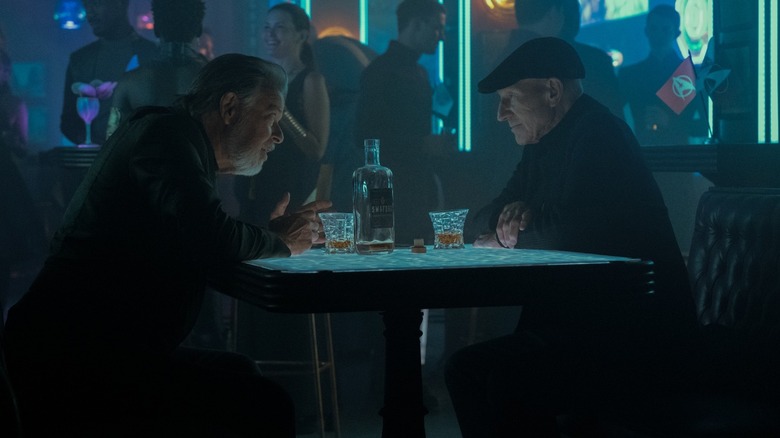
The third season of "Picard" wisely flees into the arms of comfort, putting its characters in more familiar settings, reiterating their relationships, and drawing the story to a more intimate level. This season has famously been advertised as starring most of the "Next Generation" cast, reuniting on screen for the first time since "Star Trek: Nemesis" in 2002. "Picard" will catch up with each NextGen character one by one, explain where they have been for the past 20 years, and reunite them very gradually and in an organic way. It won't be until the show's sixth episode that all the characters will finally appear in the same episode. That restraint is greatly admired.
Previously, "Picard" has been a very violent show, with every single character regularly committing murder. Seven of Nine (Jeri Ryan) previously on "Star Trek: Voyager" had transformed into a violent bounty hunter who says things like "Never again will I kill someone just because they deserve it." Raffi (Michelle Hurd) was a miserable drug addict. Capt. Rios (Santiago Cabera) was a drinker left marked by murders in his past. Even the mild-mannered Dr. Jurati (Alison Pill) poisons an old boyfriend. The characters had no reason to relate on a one-to-one basis, there were no episodes devoted to any one department or field of expertise. Importantly, the character didn't have a centralized workplace where they would regularly convene, often fanning out into the galaxy, separated by circumstance. The first two seasons were sprawling, violent messes that had none of the hallmarks that make Trek Trek.
Season 3 of "Picard" takes place largely on a Federation starship, and most characters are in uniform, behaving professionally. It's astonishing how refreshing that feels to an old Trekkie like me.
The Setup
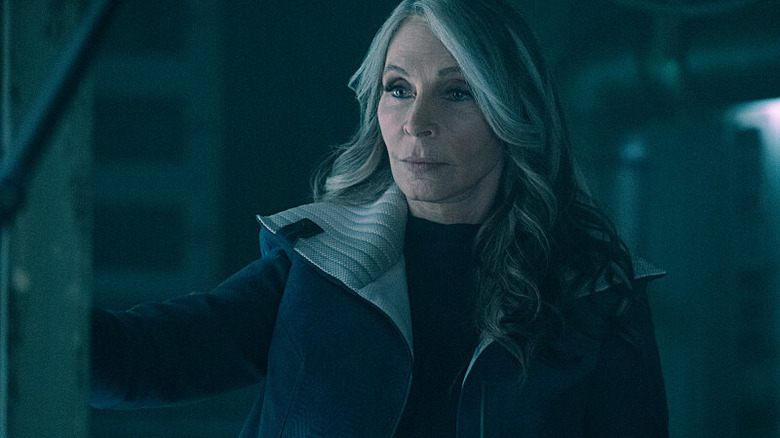
The ship in question is the U.S.S. Titan, Riker's old command, now captained by a new character named Capt. Shaw (Todd Stashwick). Shaw is a fascinating and wonderful new character, in that he's a rude, pushy jerk and self-described a-hole. His command style is curt, and he often berates his inferior officers. I wouldn't want to work for Capt. Shaw, but I admire a different look at starship command styles. One can tell that, once you are trusted, Shaw would soften a smidge.
The third season doesn't begin promisingly. Dr. Crusher (Gates McFadden) has been on board a tiny vessel of her own, living with a mysterious young man named Jack (Ed Speelers). She is being hunted by mysterious aliens in masks and has to kill off a few of them when they intrude on her ship. She sends a distress call to Picard (Patrick Stewart), asking for help. One might immediately assume that the showrunners have transformed her and perhaps all her returning co-stars into violent murderers. Luckily, that will only prove to be true for one other character. The third season of "Picard" will not be about how everyone has devolved into bitter, angry death machines.
The elderly admiral Picard reunites with his old first officer Capt. Riker on the eve of a massive Federation anniversary (they are both to make speeches at an upcoming gala) to discuss how they might rescue Dr. Crusher. Thanks to subterfuge, and the help of the Titan's new first officer Seven of Nine, they will attempt to commandeer the ship. When they arrive at Dr. Crusher's remote location, they find her beset by a mysterious new murderous supervillain named Vadic (Amanda Plummer) who will chase them into a nebula and engage in battle.
Wrath Of First Contact
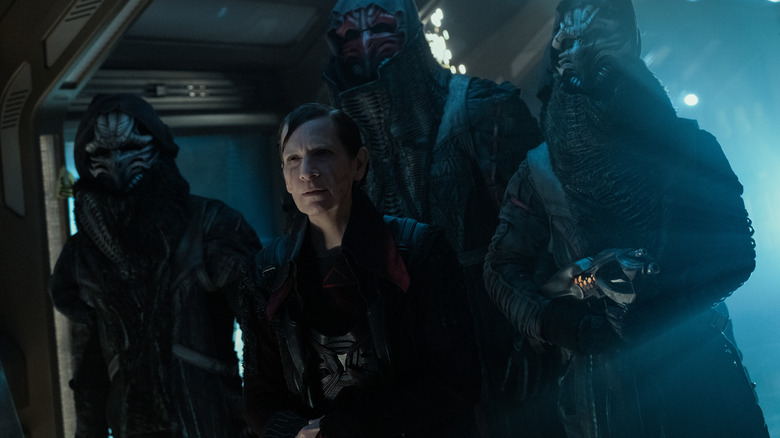
In a subplot, Raffi is working by herself to investigate the theft of a powerful, portal-based weapon that has been stolen from a Federation storehouse. Who she's working with and the true nature of the storehouse will be revealed later in the series. She will also discover the presence of an old "Star Trek" antagonist that hasn't been seen in any series for many years.
This season of "Picard," perhaps eager to prove how Trek-like it can be when compared to its previous seasons, cribs very, very heavily from "Star Trek II: The Wrath of Khan" and "Star Trek: First Contact," the two most action-packed of the pre-Kelvin Trek films. In addition to the villain-who-wants-revenge trope (also used in "Nemesis," the 2009 Trek, "Star Trek Into Darkness" and "Star Trek Beyond"), there is an extended sequence inside of a space cloud where the two ships can't necessarily see each other. Additionally, a huge amount of Gerry Goldsmith's old scores are used, including his entire closing credits orchestration from "First Contact." "Picard" also employs a recognizable BWAAAM-like musical sting not heard in Trek since the 1980s.
Despite these obvious callbacks and familiar locales, however, "Picard" is not resting on its nostalgic laurels. It has, in its first six episodes, been quite ginger with its references and guest stars, meeting them out carefully and organically. This is not an Easter egg hunt like "Lower Decks."
Fan Service
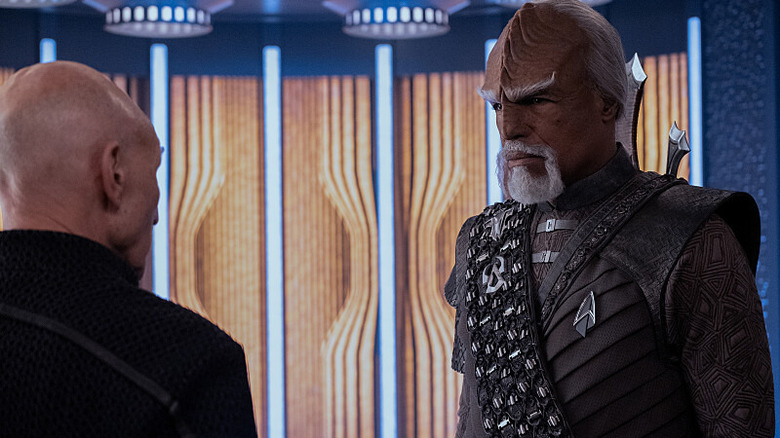
Indeed, the fan-service Easter eggs might be this season's weakest element. In episode six -- perhaps the show's most unabashedly embarrassing -- the series will dive headlong into nostalgia, and attempt to milk emotions out of mere familiarity. There will be a sequence where some familiar vehicles make notable guest appearances, and several recognizable theme songs will play on the soundtrack. "Picard" has, until that point, not had many rib-poking "remember this??" moments. It seems that six hours into this "First Contact"-like movie, the showrunners couldn't help themselves. This episode also. has some references and background gags that will elicit more cynical eye-rolls than nostalgic exhilaration.
Luckily, it's only been a small moment in an otherwise striking solid season, full of great characters, good relationships, and blanket-like Trek comfort.
Additionally, the show knows Trekkies are ship fetishists, and spends a lot of time looking at ship exteriors, letting the audience memorize their lines and details. This is wise and also refreshing. After the first two seasons of "Picard," I still couldn't recall what the La Sirena looks like. Indeed, there is a scene early in the first episode of "Picard," called "The Next Generation," where Riker, sitting in a bar, notes that it is selling starship collectibles. The collectibles on screen are none other than the scale models currently being sold by the recently-shuttered collectible company Eaglemoss. It's rare that "Star Trek" will attempt to hawk its own merch.
Overall, the third season of "Picard" is a head and shoulders above its predecessors. It may be more predicated on action and mayhem than NextGen, but so was "First Contact," and, well, that film wasn't terrible. This is, essentially, the best NextGen movie that we never got. This old Trekkie is grateful for it.
"Star Trek: Picard" season 3 premieres February 16, 2023 on Paramount+.
Read this next: The Main Star Trek Captains Ranked Worst To Best
The post Star Trek: Picard Season 3 Review: The Best Next Generation Movie We Never Got appeared first on /Film.
Don’t watch ‘Star Trek: Picard’ season three, it’ll only encourage them
The following article contains spoilers for earlier Star Trek properties but doesn’t reveal specific spoilers about Star Trek: Picard season three, not that you should be watching it anyway.
It’s 2034 and Warner Bros. decides it needs to wring more cash out of Friends, the decade defining cultural juggernaut and sitcom behemoth. Imagine what that show would be like; A warm and cozy three-decades-later check-in on characters you know intimately well. After all, you probably spent your formative years watching them mature from young single New Yorkers to a series of families. Maybe it’ll tickle those nostalgia glands, reminding you of when you watched the show with your own family as a kid.
Unfortunately, the hotshot creator of the age decided they want to go in a different direction this time. This needs to be a dark and gritty miserycore grief orgy that better reflects our more rough-and-tumble times. After all, TV these days can’t be gentle or comforting, offer escapism or posit a better world, not since Trump, Brexit, Bolonosaro, January 6th and Ukraine. The creative team have got that quote on a poster in their office, the one about thetriumph of evil, and they’re not going to sit idly by, they’re taking a stand.
In the sequel, Rachel’s famous for her wellness TikTok that often makes allusions to “reclaiming” the US as a white ethnostate. Joey lost an arm while filming a movie and is now in prison after a failed heist to pay off his life-ruining medical debt. Monica’s got a crippling adderall addiction and slips away most nights to murder the neighborhood cats and dogs. Everything’s shot in ultra gloomy vision, and there’s no laugh track, jokes or a studio audience, just unrelenting misery.
This revival is dense with references to the Friends backstory as well as the broader Friends universe. Remember that Lisa Kudrow played Phoebe’s twin sister Ursula on Mad About You, right? If not, you better get yourself to Wikipedia to study up. I mean, it won’t be relevant to the plot, but it’s something you remember, so clap, go on, clap.
You might be wondering why such a project would be allowed to happen, given that it wouldn’t be fun for fans of the original series. Times change, characters age, but you can’t turn a cozy sitcom into Breaking Bad overnight and expect that to be satisfying. You’d hardly think it’d be a big pull for newbie viewers either, who’d probably steer clear if they weren’t already familiar with 236 episodes of intricate backstory. Nostalgia revivals don’t need to be slavish to their source material, but it’s hard to see the appeal for something so grim and unpleasant.
Apropos of nothing, let’s talk about the third and final season of Star Trek: Picard.
Season three was sold as something of a course correction for Picard after its first two deeply unpopular runs. It ditched all but Raffi from the roster of original characters created for it, and instead pulled in the stars from Star Trek: The Next Generation. As well as the returning Jonathan Frakes, Marina Sirtis and Brent Spiner, we’ll see LeVar Burton, Gates McFadden and Michael Dorn back in action. And, in the six of ten episodes I’ve been permitted to watch under strict embargo, I’d say only one of them feels like the character we know and love.
Unfortunately, while we have the other TNG stars, the creative team of Executive Producer Alex Kurtzman and showrunner Terry Matalas didn’t bother to grab any of that show’s lightness of tone. Picard remains a grimdark slog, shot on perpetually underlit sets and featuring a succession of increasingly-bleak setpieces. The plot is stretched so thin that the first four episodes turn out to be little more than an extended prologue for the rest. A prologue that could, I should add, have been an efficient, and possibly more enjoyable, hour. The story is so obvious, too, that you’ll be ahead of the characters pretty much non-stop as they stumble from one idiot plot to the next.
It’s maddening that we can see how much of the plot is blocking itself to ensure things can’t move forward too quickly. There’s a whole episode of gosh-isn’t-this-tense tension that could have been eliminated if anyone in Starfleet pulled out a tricorder and used it as God intended. In this utopian future, where science and technology really are advanced enough to look like magic, why does nobody employ the tools hanging from their waistband? Mostly because Paramount ordered ten episodes, and ten episodes is what we’re going to give them. Another episode has a time-filling punch fight runaround because it’s now somehow impossible for a serving officer to use a Federation ship’s intercom system to call the bridge and warn them of impending danger.
Picard is one of those series where you often find yourself shouting at the screen as the next stupid moment unfolds in front of you. Even worse is that the show’s creative team seem to think that it’s us, the audience, who are deficient in the thinking department. There is scene after scene in which characters repeat the same lines back to each other because the crew assume we’re not paying attention. Because of the limits on spoilers, I’ve re-written a scene to match the sentiment, if not the words verbatim, so you can get a sense of what to expect:
CREW 1: The ship is being pulled closer to the black hole’s gravity well.
CREW 2: We do not have enough power to pull ourselves away, sir.
RIKER: Are you saying that we’re dead in the water?
CREW 1: We will be passing the black hole’s event horizon in 17 minutes.
RIKER: We’re dead in the water and we’re sinking.
PICARD: We’re going to be dead in 17 minutes, Will, unless we can find a way to solve this.
RIKER: We’re sinking into quicksand, and there’s no time to grab a helping hand.
The irony is that this run is so thicket-dense with references that the show basically assumes that you’ve already seen pretty much everything produced during Trek’s gold, silver and bronze ages. But, to make sure nobody’s left behind, everyone has to speak in exposition so hamfisted that, now that this is over, I think Michelle Hurd deserves personal injury compensation. Raffi gets saddled with so many cringe-inducing lines where she states, and restates and re-restates the obvious that I started grasping fistfuls of my own hair to relieve some of my discomfort.
And as for the storyline, what can I say? It’s clear that Alex Kurtzman is only comfortable writing in a single register. His go-to is usually a militaristic, testosterone-fuelled paranoid Reaganite fantasy in which the real villain was our own government all along. He did it in Into Darkness, Discovery season two and even the first season of Picard – to the point where Starfleet is now so lousy with double agents that all of their schemes fail because the saboteurs are all too busy sabotaging each other’s plans instead of that of the wider Federation.
If Picard is nothing else, it’s nearly pornographic in its use and misuse of franchise iconography. I always felt that Jeff Russo’s Picard theme sounded more like the library music for a corporate advert than the makes-your-heart-soar theme a Star Trek deserves. And here, it’s been ditched in favor of Jerry Goldsmith’s sumptuous, nectar-for-the-ears score for First Contact. The first title card is a direct pull from Wrath of Khan, and pretty much every element therein is an elbow to the ribs, reminding you of older, better Star Trek movies and TV series.
An early scene has a character “hijacking a starship” under false pretenses while it’s in spacedock. You know, the mushroom-shaped megastation orbiting Earth from The Search for Spock onwards. And because we’re already going beat-for-beat for a sequence xeroxed from 1984, said starship even jumps to warp as soon as it’s past the exit doors. Despite the fact that the sort of hardcore Trek fans who would spot the reference would also note that you’re not meant to jump to warp while inside a solar system when there’s no urgent need to do so.
I’ll admit, this is postgraduate degree-level Star Trek nerdery, but you can’t have it both ways: If you’re trying to placate hostile viewers with the excessive fan service, you can’t then complain when they point out that you’re doing it all wrong.
The show’s teaser trailer already revealed we’re getting an overstuffed roster of villains to round out the run. Amanda Plummer’s captain of an enemy ship that shares a design with the Narada from Star Trek ‘09. Then there’s Daniel Davis’ holographic Professor Moriarty, as well as Data’s evil twin brother Lore. Both of these sorta make sense in the context, but there’s a hell of a lot of narrative scaffolding to explain away the fact that Brent Spiner is now 74 years old. (The dude looks good for it, but it’s hard to play an ageless android when time marches on and the de-aging CGI budget is spent on smoothing out Patrick Stewart’s face for a single flashback and the pointless needle-drops that open every episode.)
Now, before you scurry off to Memory Alpha to confirm that Moriartywas locked away in a holobox at the end of “Ship in a Bottle,” and Lorewas disassembled at the end of “Descent Part 2,” yes, they were. Try to remember that showrunner Terry Matalas and executive producer Alex Kurtzman treat Star Trek’s continuity less as something which informs storytelling and more as a series of shiny objects to keep us all amused when the plot sags or anyone has any time to think about what’s going on.
I’ll also add that the trailers and promotional material have very intentionally kept a lot of material back. There are more classic-era heroes and villains crowbarring their way into the story in the way that, if it were fanfiction, would seem excessive. But, if I’m honest, the second or third time someone, or something, familiar popped up, I wasn’t whooping and cheering, I was sighing. The Star Trek universe is vast and broad and deep, but Picard makes it feel like a puddle where everyone knows each other, and everyone under the age of 30 has grown up watching The Next Generation. If you’re serving in the US Navy, for instance, how likely is it that you’d know the ins and outs of every exploit of even the most well-traveled combat vessel?
Now, I don’t have the language or experience to discuss this properly, and I’m aware of others who do feel differently. This is just my opinion, but I think the depiction of drug and alcohol use in Picard has always felt off. And since I can’t talk about the third season, I’ll talk about the first, where something very similar happened and is just as vexing here as it was back then. Raffi deals with her son’s rejection by relapsing, but then mere hours later, she’s back at her station and advancing the plot. I don’t recall a sense that her use clouded her judgment and I don’t think it was discussed subsequently – so despite the portentiousness in the build-up, it was depicted almost like someone just having a bad day and knocking back some drinks. I’m not saying that’s a bad thing, because there are plenty of people who use drugs and it doesn’t impact their professional lives at all. (Read any Making-Of book about The Original Series and you'll notice more than a few references to the production team's drug use.) But if you’re going to write a plot where scenes hang on the will-she-or-won’t-she tension of relapse, but it all turns out to be hunky dory straight after, what was the point of depicting any of this in the first place?
Then there’s the violence, and the casual way that it’s doled out, especially in the show’s numerous interrogation scenes. I’m not advocating for forced confessions, but given Starfleet’s advanced science, and the Federation has a planet of literal telepaths at its disposal, why are we always punching people in the nose with a butt of a phaser pistol? I mean, I know why: It’s a nerdy sci-fi show play acting as a muscular basic-cable drama, but that doesn’t mean it works. I’ve often theorized that many modern-day Star Trek creators would much rather be over the hall making their own Star War instead. Maybe I’m wrong, and the Picard crew is really nostalgic for the hamfisted Bush-era politics of 24.
It was always going to be hard to pull Picard out of its creative slump that started back when the show was greenlit. If there was ever a character who we’d seen grow, change, mature and treat his own life with more kindness, it was Jean-Luc Picard. Some of TNG’s best episodes forced Picard to consider his own life, his history, his mortality, his motives, including the series’ grand finale. “All Good Things” isn’t just good Star Trek, it’s one of the best series finales ever made, encompassing the entire breadth and depth of The Next Generation in one glorious sweep. And between seven years of TV and four less essential but still important movies, he was done.
I wrote somewhere, I forget where, that a smarter idea would have been to center the action on a less-well served member of the Enterprise D crew. I’d have been second in line to watch a Geordi LaForge spin-off (behind uber fan Rihanna, of course), and there’s plenty to explore there. Or a Beverley Crusher spin-off, as she solves people’s problems as a simple country space doctor back on Earth or on some far-flung planet. Maybe a sci-fi version of In Treatment fronted by Marina Sirtis could have worked, and would have certainly cost less than this.
All of which would be preferable to what we got, which despite initially having a Pulitzer Prize-winning novelist at the helm, was two years of go-nowhere, do-nothing bore-a-thons. Its brief moments of cleverness drowned out by the baffling character decisions, tin-eared dialog and ligneous acting. And both had plots which would have struggled to fill a movie stretched out across a painfully slow ten hour runtime.
And that’s before we get to the moralizing, which had characters pointing at a bad thing and saying “thing bad.” I don’t think the second season’s 26 percent rating on Rotten Tomatoes is because the (inexplicably) conservative wing of Trek fandom was outraged that a show about happy space communists solving problems while remaining friends suddenly “got woke.” Good, old-fashioned Star Trek at least had the good grace to cloak its progressivism in allegory that could slide past the otherwise closed minds of some of its viewers. By comparison, Picard felt like the first draft of a high school theater production made the term after the teacher had explained agitprop.
Maybe that’s why I feel so annoyed by Picard, because all of the things that are wrong with the show, and its kin, are examples of amateurishness. Amateurish plotting, amateurish dialogue, a lack of thoughtfulness about the material, what it says, or what it’s doing. Just an endless parade of big, dumb, brash, po-faced melodrama used in place of some sort of maturity or integrity. I don’t expect Star Trek to be brilliant all the damn time, but I do expect a minimum standard of something to be upheld. And this falls so far below it, it’s hard to call it Star Trek. Some people will call that gatekeeping, but Star Trek can be anything it damn well wants to be, so long as it's competently made and halfway entertaining.
The constant callbacks got me thinking about the period when Nicholas Meyer was, directly or indirectly, the major creative force behind Star Trek. It’s been 32 years since his 1991 swansong, The Undiscovered Country, and it remains a high-water mark of cinematic Trek. Drawing to a close the story of The Original Series crew, Meyer didn’t go for nostalgia, but savaged his characters, exposing their flaws, their bigotries, their failings. There was redemption, and heart, and it never needed Meyer to stage endless close-quarters phaser-fu fights in unlight rooms.
But that was a filmmaker with a clear vision, and the good graces to really drag his characters in the dirt before washing them clean. Imagine what would happen if Picard encountered any of the same level of subtext – they’d probably spend an hour running from it before beating it over the head with the butt of a phaser rifle and then spend the next hour feeling glum about it. If nothing else, I’d say don’t even watch Picard for ironic kicks, lest Paramount think it’s somehow a runaway hit and continue to produce crap like this.
Does Sons of the Forest have crossplay?
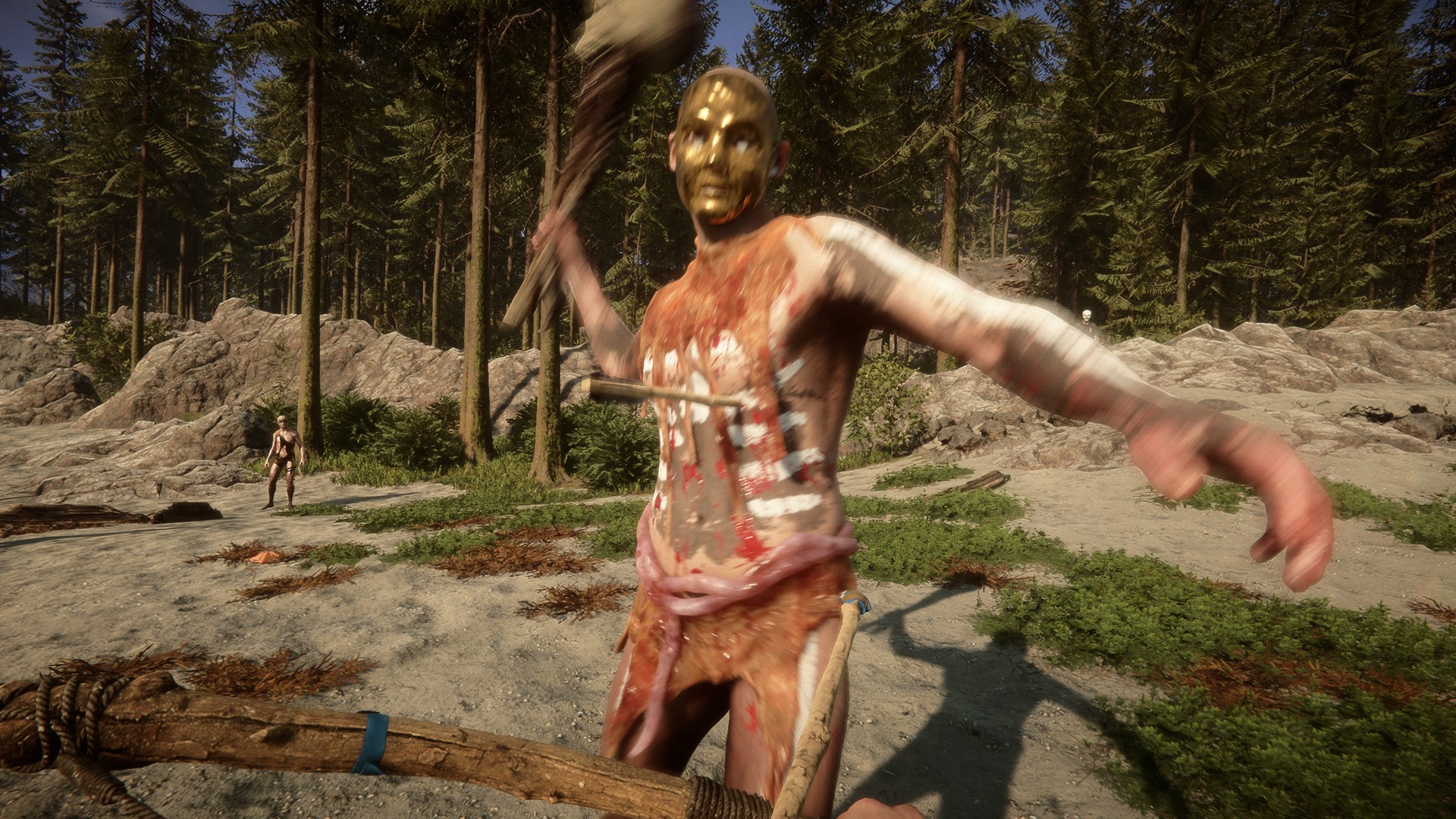
Is Sons of the Forest crossplay? If you’re excited to play The Forest 2 multiplayer with your console brethren, the answer may disappoint you for now. That's not to say it’ll stay that way though, since the game is initially launching in early access, with more features and mechanics to be added in the future.
Before we dive into Sons of the Forest crossplay, it's worth mentioning that Sons of the Forest multiplayer is available in the horror game, and you can play with up to seven friends - or strangers - by hosting or joining a server. However, what about if your friends aren't on PC, and want to play Sons of the Forest on PlayStation or Xbox consoles? Well, then you need Sons of the Forest crossplay.
Harrison Ford Has (Mostly) No Hard Feelings About Indiana Jones And The Kingdom Of The Crystal Skull
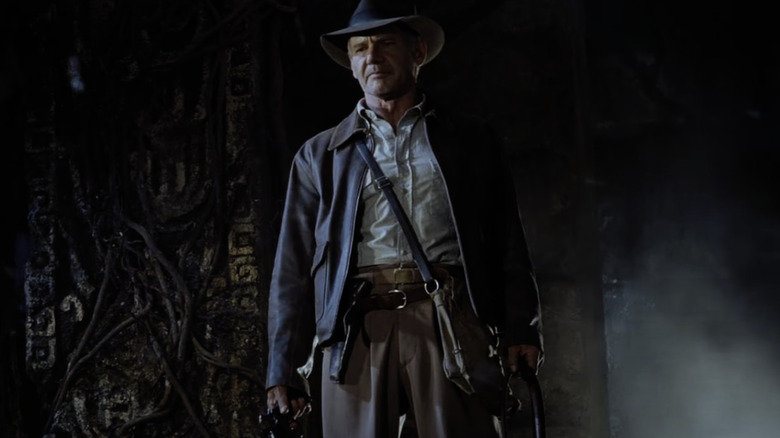
Although "Indiana Jones and the Kingdom of the Crystal Skull" is the most financially successful entry in the series' legacy and initially opened to positive reviews, the fourth "Indy" film has suffered from a troubled reputation from critics and audiences alike ever since. Many felt that the charms that made the "Indiana Jones" trilogy so captivating were largely missing in its fourth sequel. Sure, there was always a bit of a supernatural undertone to Indy's world, but audiences could not suspend their disbelief around a pivotal twist involving ancient aliens. Others loathed the messy use of CGI, and many fans did not accept Mutt Williams (Shia LaBeouf) as the new heir to the "Indiana Jones" franchise.
As time passes, pop culture has a tendency to "reclaim" or re-evaluate negatively received works of mainstream art; the "Star Wars" prequels were once universally accepted as poor, indulgent filmmaking, but now they have a strong cult following behind them. However, this never quite happened to "Crystal Skull," it is still considered one of the weakest in Spielberg's catalog and a failed attempt at a legacy sequel (a trend that would soon change modern Hollywood).
This year, Ford is finally getting a do-over with "Indiana Jones and the Dial of Destiny," helmed by James Mangold ("Logan," "Walk the Line,"). This fifth installment promises one last ride for the professor, archeologist, and adventurer. It will also serve as a revival of the entire "Indiana Jones" brand, allowing for spin-offs and expanded universe material in the Disney-Lucasfilm era.
This week, Ford sat down with The Hollywood Reporter to discuss all of his recent projects, from his leading role in the "Yellowstone" spin-off "1923," to "Indiana Jones and the Dial of Destiny." In the interview, Ford reflected on the critical response to "Crystal Skull," and shared that he (mostly) has no hard feelings about it, giving us an appropriately "Harrison Ford" response.
'I Don't Feel It's Necessary To Address Those Issues'
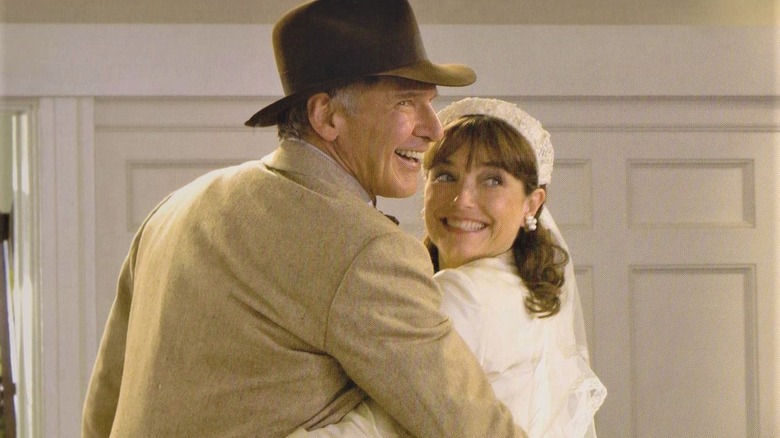
"Where are they now?" asked the now 80-year-old actor, coming off a bit stronger than intended. "No. I mean, [the critics] were harsh on it, but what are they doing now? I understand. But those were their rules — not [Spielberg and Lucas'] rules."
What Ford is saying (in his own signature, grumpy Harrison Ford way) is that the critical response of "Crystal Skull" doesn't phase him one bit, and as a professional, it shouldn't — the film that he created with Spielberg and Lucas aligned with their vision. The fans, critics, and audiences who didn't click with the film were simply looking for something different. As an artist, he doesn't feel it is his responsibility to impose on what people think about his work, and by extension, he believes that public consensus over the last film wasn't relevant to him when he decided to return to the character of Indiana Jones in "Dial of Destiny."
Ford elaborated, saying:
"They were imposing their rules on what the movie should be. I don't feel it's necessary to address those issues. I think that everyone has a right to their opinion. The film was not as successful as we wanted it to be, perhaps. But it didn't create an attitude or a behavior that carried over into this film."
'It Isn't The Years, It's The Mileage'
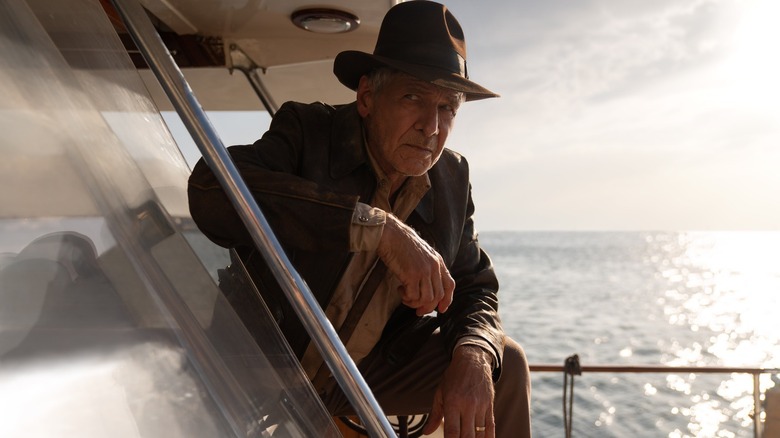
However, there is one aspect to "Crystal Skull" that Ford agrees was poorly conceived. The fourth "Indy" film is certain to age poorly now that there is a definitive sequel. One issue lies in how frequently the fourth film comments and jokes about Indy's age. Ford was 64-years-old on the set of "Crystal Skull," which was meant to be an end-of-the-road adventure for the character. Little did they know that at 80, Ford would still be hungry for another adventure.
In "Dial of Destiny," the actor made sure they moved away from the tired "old-timer" jokes. "Yeah. In 'Dial of Destiny' there were a lot of old jokes in the script. We took them all out," Ford explained to THR. "There is a moment where he observes himself in this situation and says, 'What the f**k am I doing in here? But I hate what I call 'talking about the story.' I want to see circumstances in which the audience gets a chance to experience the story, not to be led through the nose with highlights pointed out to them. I'd rather create behavior that is the joke of age rather than talk about it."
Unlike Han Solo, Harrison Ford is actually quite fond of playing Indy. He's always been vocal about this, but one can especially tell by the amount of respect and care he has for the character, creatively. It's easy to be cynical over the prospect of more franchises, but from Ford's perspective, it's understandable why he wants to part with the character on better terms.
"Indiana Jones and the Dial of Destiny" releases in theaters on June 30, 2023.
Read this next: 12 Best Performances In Steven Spielberg Movies
The post Harrison Ford Has (Mostly) No Hard Feelings About Indiana Jones And The Kingdom Of The Crystal Skull appeared first on /Film.
Twitter is making millions of dollars from previously banned accounts, report says
Twitter is making millions of dollars from just a handful of some of its most infamous users, according to a new report. New research from the Center for Countering Digital Hate (CCDH) estimates that Twitter “will generate up to $19 million a year in advertising revenue” from just 10 accounts that were once banned from the platform.
The report looked at the current engagement with 10 accounts that were previously banned for “ for “publishing hateful content and dangerous conspiracies.” The accounts were reinstated after Elon Musk’s takeover of Twitter. The group includes a number of high-profile accounts associated with extremism and conspiracy theories, including those belonging to influencer Andrew Tate, Daily Stormer founder Andrew Anglin, prominent antivaxxer Robert Malone and the Gateway Pundit.
In order to estimate their reach and engagement, CCDH analyzed nearly 10,000 tweets from these accounts during a 47-day period in December and January. According to their analysis, “on an average day, tweets from the ten accounts received a combined total of 54 million impressions,” they write. “Projecting this average across 365 days, the accounts can be expected to reach nearly 20 billion impressions over the course of a year.”
In order to determine how much ad revenue those impressions might generate for Twitter, CCDH says it created three new Twitter accounts that followed only the 10 users named in the report. The authors found that ads appeared about once every 6.7 tweets. Then, using data from analytics firm Brandwatch, which estimates that “Twitter ads cost an average of $6.46 per 1,000 impressions,” CCDH came up with “a total figure of up to $19 million in estimated annual ad revenues across the accounts.”
While the estimates aren’t a precise accounting of how much Twitter might be making from these users, it demonstrates how valuable a small number of highly polarizing accounts can be for the platform. It also underscores how much more Twitter stands to gain by bringing back even more controversial users.
All of the accounts named in the report were once permanently banned from twitter, but were reinstated after Musk said he would offer “general amnesty” to users who hadn’t broken the law. Twitter also recently announced plans to allow even more previously banned users to appeal their suspensions.
At the same time, Twitter’s advertising business has taken a major hit since Musk’s takeover. A number of high profile advertisers have pulled back from the platform, and revenue is down as much as 40 percent, according to reporting fromPlatformer.
The report also points out several instances when ads from prominent advertisers appeared adjacent to offensive and inflammatory posts from these users. For example, a Prime Video ad directly underneath a tweet from Andrew Anglin that states “the only career a woman is actually capable of on merit is prostitution.” The report also highlights an ad from the NFL, which appeared directly underneath a tweet misinformation about COVID-19 vaccines.
“This work confirms that Twitter has been displaying ads next to every one of the toxic accounts we have investigated, despite the fact that the individuals behind them are known to promote hateful views and falsehoods,” CCDH writes.
The Sexy Spartacus Show Is Returning To Starz With A 'New Chapter' From Creator Steven DeKnight
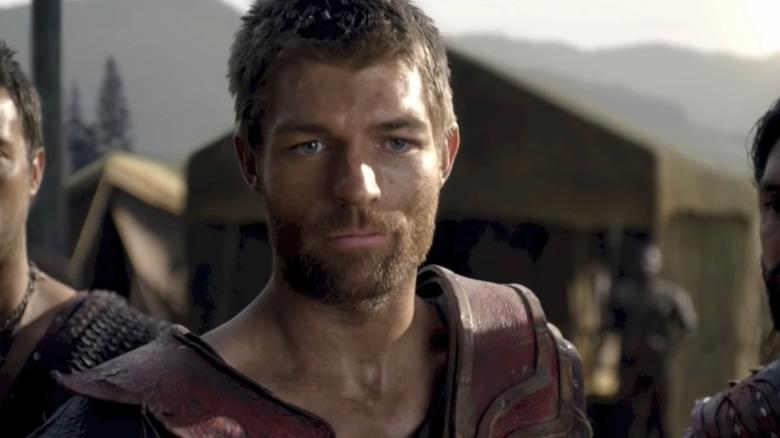
Everyone, get out your swords and sandals because we're heading back to the arena! Starz has just announced that it is currently developing a new "Spartacus" series! Forgive the excessive use of exclamation points, but I loved every minute of this show from the first moment to the last, including the prequel "Spartacus: Gods of the Arena." (Full disclosure: I know many of the cast and crew, and I moderated a panel for the series at San Diego Comic-Con, but I fell in love with the show long before any of that.)
The first season of the series was entitled "Spartacus: Blood and Sand" and debuted in 2010. Before the second season, star Andy Whitfield was diagnosed with early-stage non-Hodgkin lymphoma, leading to the prequel to give him time to recover. Sadly, he passed away, and the role was recast with Liam McIntyre for season 2, "Spartacus: Vengeance" and season 3, "Spartacus: War of the Damned."
The show was, as our title says, very sexy. Still, it was also a compelling drama about the titular Thracian gladiator who led a revolt of enslaved people against the Roman empire.
According to the official press release, the new series will "explore uncharted territory and a new journey of the original series' iconic characters." Writer, creator, and executive producer Steven S. DeKnight ("Daredevil," "Pacific Rim: Uprising") will serve as showrunner and executive producer.
I Am Spartacus!

Though Spartacus died in the finale, there were characters left alive at the end of the third season. The new series will take place after those events. Here is the official synopsis for the new series:
In the aftermath of the defeat of Spartacus and his rebel army, the drama will depict a new tale of treachery, deceit, and blood unfolding beneath the foreboding shadow of Rome.
Kathryn Busby, President, of Original Programming for Starz said in a statement, "It has been over a decade since 'Spartacus' delighted international audiences and we are thrilled to reimagine and expand this gripping, action-packed drama for our viewers today." She continued by saying, "'Spartacus' has deeply invested fans who are eager for its return, and we look forward to working with Steven [DeKnight] on this exciting next chapter."
As one of the deeply invested fans, I would have to agree with that. DeKnight added in the statement, "It's such an incredible honor to be invited to return to the world of 'Spartacus' and to be met with unbridled creative support from my colleagues at STARZ and Lionsgate. Together we are crafting something truly unique and unusual for the next chapter in this epic story."
The new series will be produced by Lionsgate Television, with Executive Vice President, Original Programming, Karen Bailey, with Directors of Original Programming, Giovanna Desselle and Alex Alberts, set to oversee production for Starz. Head of Scripted Development and Executive Vice President, Scott Herbst and Senior Vice President of Scripted Development, Jocelyn Sabo, will both oversee for Lionsgate Television.
This does seem like the perfect time for a rewatch of the original series, which also starred Manu Bennett, Lucy Lawless, John Hannah, Peter Mensah, Nick E. Tarabay, Craig Parker, Viva Bianca, Katrina Law, Erin Cummings, Jai Courtney, Cynthia Addai-Robinson, and Dan Feuerriegel.
Read this next: The Moments That Defined TV In 2022
The post The Sexy Spartacus Show Is Returning To Starz With A 'New Chapter' From Creator Steven DeKnight appeared first on /Film.
SpaceX doesn't want Ukraine using Starlink to control military drones
Elon Musk's SpaceX may be willing to supply Ukraine with Starlink service as it repels the Russian invasion, but it's not thrilled with every use of the satellite internet technology. Operating chief Gwynne Shotwell tells guests at a Federal Aviation Administration conference that SpaceX objects to reported uses of Starlink to control military drones. While the company doesn't mind troops using satellite broadband for communication, it doesn't mean for the platform to be used for "offensive purposes," Shotwell says.
The executive adds that SpaceX can limit Ukraine's ability to use Starlink with combat drones, and has already done so. The company hasn't explained how it curbs use in the field.
Ukraine says it's not alarmed. National security council secretary Oleksiy Danilov tells The Washington Post the country doesn't rely solely on Starlink for military operations, and may only need to "change the means of attack" in some cases. Interior ministry advisor Anton Gerahchenko, meanwhile, argues that Ukraine "liberate[s]" rather than attacking, and that Starlink has saved "hundreds of thousands of lives."
Starlink has proved important to life in Ukraine since the Russian invasion began last year. The country uses the service to connect civilians, government agencies and military units that can't rely on terrestrial internet access. For drones, this could let Ukraine coordinate reconnaissance flights, long-distance targeting and bomb attacks.
SpaceX has a contentious relationship with Ukraine. The firm was quick to provide Starlink terminals soon after the war began, albeit with US government help. Musk complained that it was becoming too expensive to fund service indefinitely, but changed his mind soon after. And while Ukraine struck a deal in December to get thousands more terminals with EU assistance, that came just weeks after a steep price hike.
FCC Approves Amazon's Satellite Broadband Plan Over SpaceX's Objections
Read more of this story at Slashdot.
You Probably Recognize You Season 4's Ed Speleers (Here's Why)
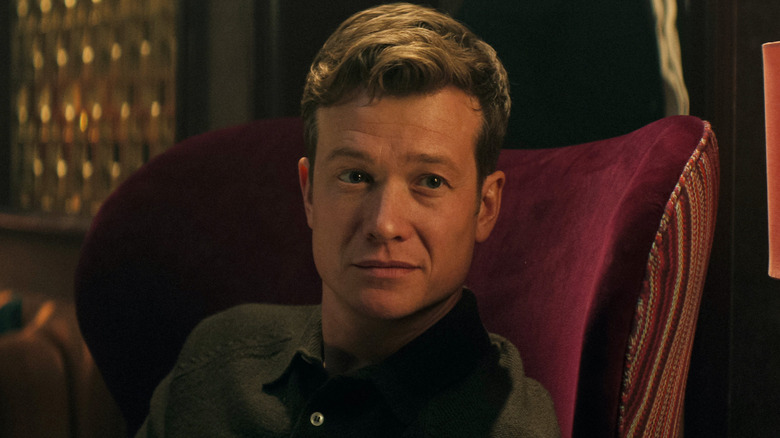
In Netflix's "You," Penn Badgley's bookish killer lives a very unstable life. Not only is it exhausting work to stalk his way into the hearts of unsuspecting ladies, it also never ends well for anyone involved. So, at the end of each and every season, Joe finds himself starting over in a new place, completely alone (if you don't count whichever unlucky woman is about to be courted into an early grave). Thankfully, despite his grating personality and penchant for murder, Joe has a pretty good track record when it comes to making friends. In the fourth season of the hit series, Joe manages to forge one of his most intriguing friendships yet, with a famous author on the verge of launching a political career.
Rhys Montrose (Ed Speleers) is one of many new characters who make up Joe's larger friend group, but he stands out among the pack as one of the least irritating. Unlike the rest of his fellow Oxford graduates, Rhys is extremely aware of his fortunate position in life because he hasn't always been so lucky. In fact, he owes his fame to his memoir about lifting himself out of poverty. From Joe's warped perspective, Rhys is a kindred spirit who knows what it's like to survive hardship... Of course, Joe's version of hardship is that time he murdered his wife and faked his own death, so it's hardly an exact comparison.
Speleers makes a fantastic addition to the cast as the dry politician, whose interactions with Joe are surprisingly humanizing for the central serial killer. So who is the British actor behind Joe's new bestie? If, like me, you found yourself squinting at his face and trying to figure out why Speleers looks so darn familiar, then you'll be pleased to join me on a dive into the actor's resume.
Where Else Have We Seen Ed Speleers?
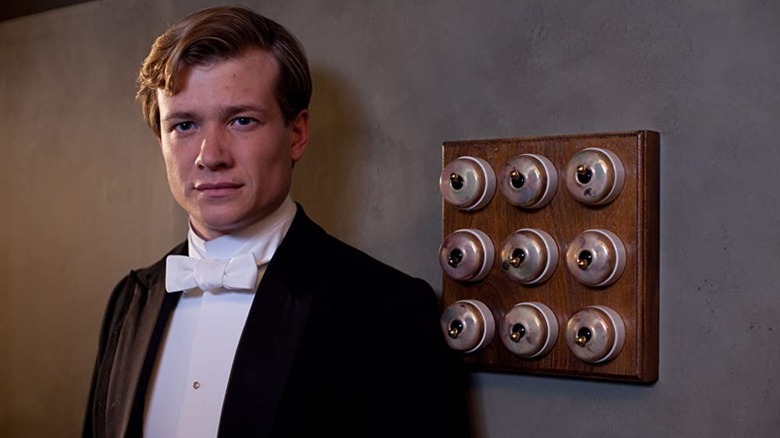
If you didn't recognize Ed Speleers right away, it's probably because seeing him in a modern setting is a bit of a novelty. In one of his most notable roles, Speleers spent many years as a regular on "Downton Abbey," bustling around downstairs and carrying trays upstairs as a footman in the Crawley household. Speleers played James Kent aka Jimmy, the overconfident staff member whose ambition led to questionable choices and fraught, soapy tension. Eventually, his rudeness faded into snark and he warmed up to his fellow workers, all the way through Jimmy's bittersweet season 5 departure. Speleers stayed busy though, later popping up in "Outlander" as Stephen Bonnet, the sinister smuggler who so effectively terrorizes the Fraser family that he remains one of the show's most memorable villains.
While he was absolutely chilling as the despicable "Outlander" pirate, Speleers' roots are in the realm of heroism. The British actor got his start in the industry as the titular hero in "Eragon," the ill-fated film adaptation of Christopher Paolini's fantasy novel of the same name. Though the 2006 film was panned by critics, plenty of folks have fond memories of Speleers as a young farm boy who goes on a legendary adventure with dragons. While watching him woo Joe in "You," perhaps you flashed back to Speleer's feature debut.
A Footman, A Pirate, And A Space Cadet, Oh My!
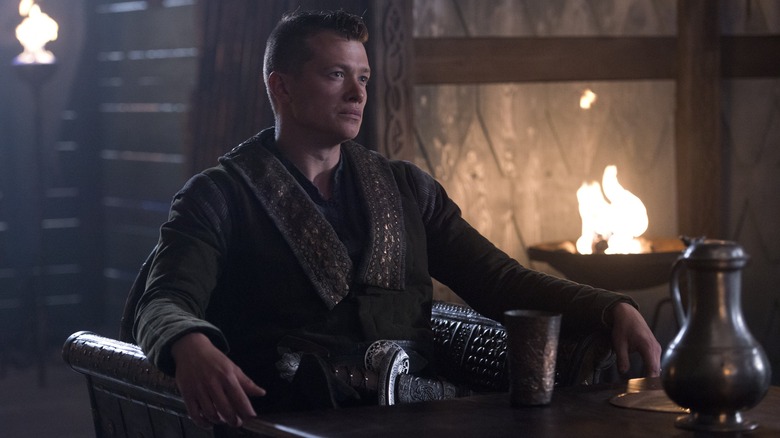
Ed Speleers has otherwise stayed busy, with projects including the ITV fantasy series "Beowulf: Return to the Shieldlands," and BBC's "Wolf Hall." As for what's to come, expect to see the actor making more headlines thanks to his prominent role in the upcoming season of "Star Trek: Picard." The details of his character remain rather mysterious, outside of the fact that he'll be helping Beverly Crusher's medical efforts on worlds Starfleet has forgotten.
That brief descriptor raises more questions than it answers, but most importantly — will this be a case of sinister Speleers, or will he be a welcome presence as Jean-Luc Picard embarks on his most daring mission yet? Only time will tell, but if all else fails, Speleers will later star opposite Lindsay Lohan in Netflix's "Irish Wish." There's no way he can be a malevolent presence in a romantic comedy!
Read this next: The 15 Best Anthology TV Series Ranked
The post You Probably Recognize You Season 4's Ed Speleers (Here's Why) appeared first on /Film.
The Titanic Survivor Who Starred In The First Movie About The Titanic
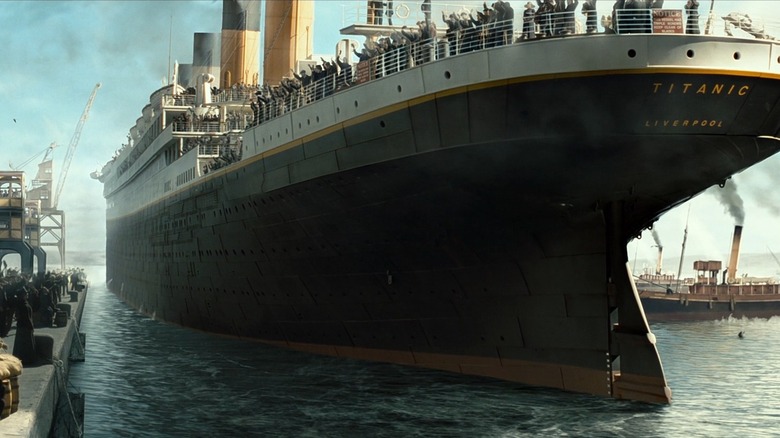
(To celebrate "Titanic" and its impending 25th-anniversary re-release, we've put together a week of explorations, inquires, and deep dives into James Cameron's box office-smashing disaster epic.)
James Cameron's "Titanic" reminded the world of the disastrous sinking of the "unsinkable" ocean liner after striking an iceberg in 1912. Over 1,500 people perished in the tragedy, though some were rescued by the RMS Carpathia hours later. One of the people who survived that terrible ordeal was 22-year-old actress Dorothy Gibson. Every survivor had a story to tell, but Gibson did something that no one else managed. She immediately put it on film.
The silent movie was "Saved from the Titanic," and it premiered on May 16, 1912, exactly a month to the day after the sinking took place. Gibson starred as a Titanic survivor, which she was, asking her fictional fiancé (named Jack, oddly enough and played by future director John G. Adolfi) to give up a life at sea after her ordeal. The film, which the Éclair Moving Picture Company made, was lost in a fire at their Fort Lee, New Jersey studio in 1914, leaving only a few stills and promotional images as evidence. Gibson co-wrote the film as well. Her own story is incredibly harrowing and absolutely gut-wrenching.
'There Suddenly Came This Long, Drawn, Sickening Scrunch'
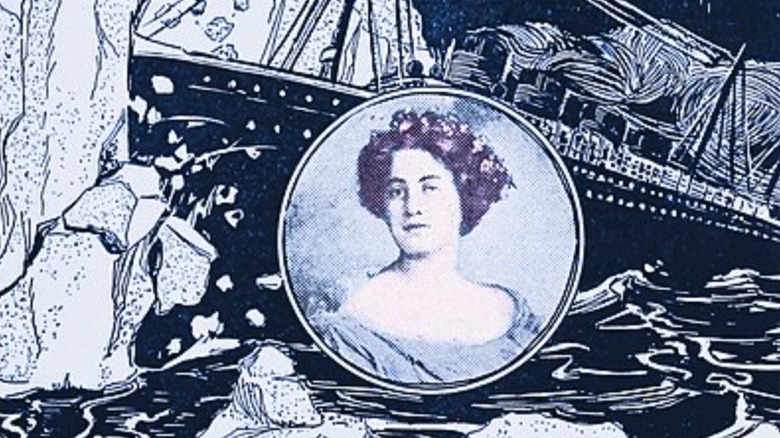
Dorothy Gibson was a star of stage and screen with plays like the Broadway musical "The Dairymaids," and films like "Hands Across the Sea" in 1911 and "A Lucky Holdup" in 1912, which was released while the Titanic was at sea. Gibson had been in Italy on vacation with her mother, according to a 1998 story in the LA Times, when she was called back to Fort Lee by her studio. She and her mother boarded the Titanic, and Gibson played cards with friends the night of the disaster, meaning they were awake when the ship hit the iceberg that caused it to sink. According to the article, Gibson said of that moment, "No sooner had I stepped into my apartment than there suddenly came this long, drawn, sickening scrunch." (Some sources say "crunch.") She noted that the deck was lopsided as she walked back.
Gibson, her mother, and the two other card players joined 24 other people (and one dog) who boarded Lifeboat #7, the first one to be lowered to the sea. It could have held 65, but as you likely know, many of the lifeboats weren't filled to capacity. The boat didn't have its plug in place, and the passengers had to shove clothing into it to keep the boat from filling with water.
They waited hours to be rescued, and when Gibson and the other survivors returned to New York City, the original destination, she adapted the story for the screen in a 10-minute reel, which was normal for the time. Gibson wore the clothing she'd been in the night of the tragedy, including "a white evening dress, long sweater, gloves and a pair of black pumps."
A Lost Account Of A Famous Tragedy
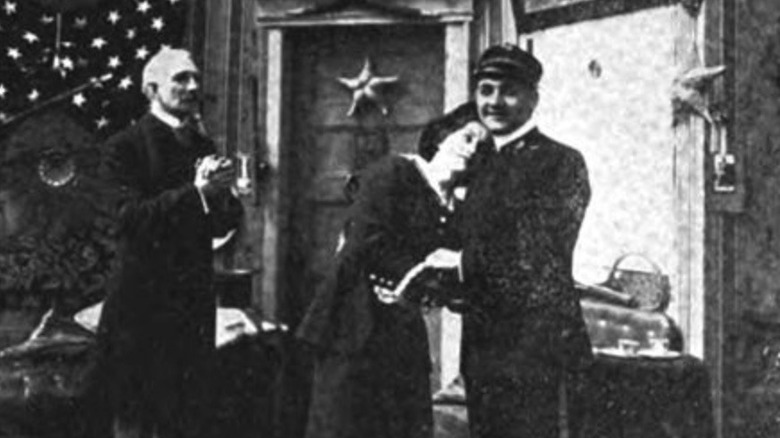
The film incorporated performances, stock footage of icebergs, footage of the Titanic's launch, and the Titanic's captain Edward Smith on its sister ship, the RMS Olympia, to convey the event's details.
The entire experience was, of course, traumatizing for Dorothy Gibson. She told Moving Picture World (via Encyclopedia Titanica), "I will never forget the terrible cry that rang out from people who were thrown into the sea and others who were afraid for their loved ones." The trauma she suffered led her to retire from film work. She moved on to an opera career after "Saved from the Titanic." Gibson died in 1946 at the age of 56.
The film itself was hugely successful, according to The History Press, and was the first of many films about the event. The second film made about the Titanic was a German film called "In Nacht und Eis" ("In Night and Ice"), which was released only a few months after "Saved from the Titanic." It was thought lost until a print was discovered in the hands of a private collector in Berlin in 1998.
"Titanic" will be re-released in theaters on February 10, 2023.
Read this next: The 30 Most Anticipated Movies Of 2023
The post The Titanic Survivor Who Starred In The First Movie About The Titanic appeared first on /Film.
How The Legend Of Vox Machina Found New Actors For Matthew Mercer's NPC Roles
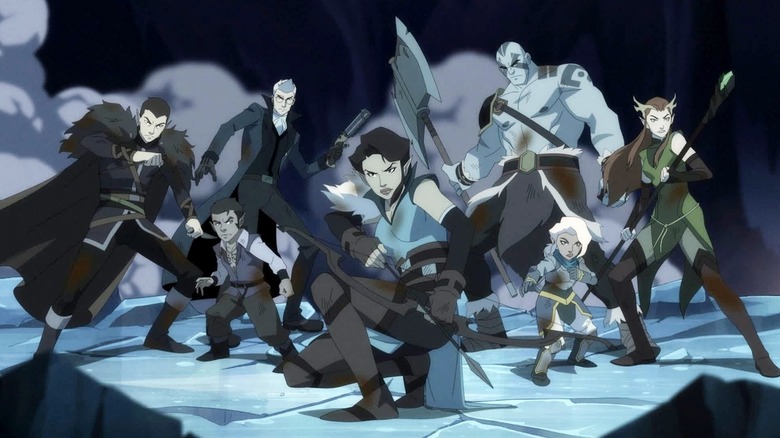
"Dungeons & Dragons," and tabletop RPGs in general, are some of the most fun you can do with a group. The crafting of a fantasy world and the improvised telling of a story as a community is exhilarating, and it's no surprise that livestream campaigns of these games have become so popular in recent years. As time-consuming as the games can be, they offer long-form storytelling that can never be replicated, because no two tables and no two campaigns are the same.
Of course, there are "Dungeons & Dragons" livestreams and then there's "Critical Role," a livestream show where a group of voice actors, led by Matt Mercer, play a game of "D&D." The show started streaming in 2015 and it quickly grew to titanic levels of popularity, with millions of views and subscribers. Fans were drawn to the show's laugh-out-loud crude humor, tear-jerking moments, and its story full of twists and turns, as well as compelling characters.
One of the reasons the show became as popular as it did was the appeal of experienced voice actors who quickly embody their characters. Seeing these adventurers brought to life through professional voice acting is very cool, but as great as Matt Mercer is (the man plays Levi, after all), having dozens of characters played by the same person works on "The Simpsons," but probably not in an animated adaptation of "Critical Role." Thankfully, he doesn't have to, because "The Legend of Vox Machina" has expanded its cast to include a mighty impressive list of names, from Lance Reddick and Janet Varney, to "Lord of the Rings" hobbit actors Dominic Monaghan and Billy Boyd.
Passion Is Contageous
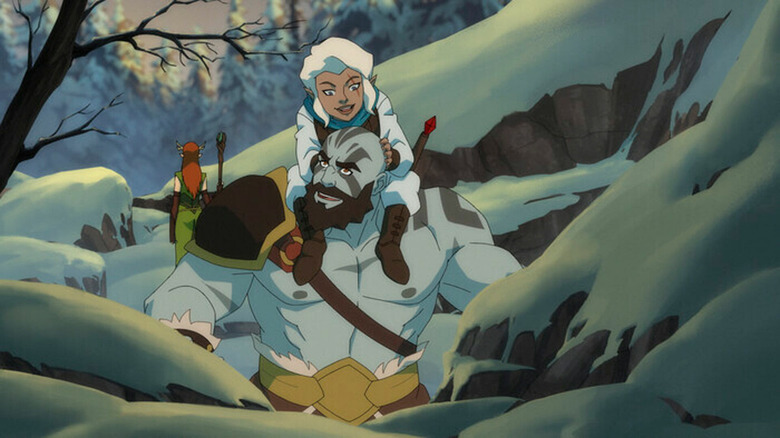
The original "Critical Role" campaign had a rather simple casting process; the voice actors were already friends playing in one of their homes. As the show grew, they had guest stars come in, mostly other actors and friends of the cast.
When it came to "The Legend of Vox Machina," that sentiment mostly stayed the same. As Travis Willingham, a member of the main cast, a writer on the show and also the CEO of Critical Role Productions, told CBR, "Compiling the wish-list was pretty cool. Like, 'Would this person actually work on this? They're going to? Oh my god.' It's, you know, it's a dream."
According to Sam Riegel, another member of the main cast, an executive producer on the animated show, and also the casting director, they mostly tried to reach out to the people they most wanted to see join the story. "Luckily me and my fellow castmates are well-established in the voiceover and animation world, so we had a bunch of contacts, a bunch of friends who are well-established voice actors," Riegel told Comics Beat. "Putting together the cast of 'Legend of Vox Machina,' it involved a little bit of everything."
For some of the roles they could simply text or call someone they knew, but for the more heavy-hitting actors (the cast includes Lance Reddick, Indira Varma, and Stephanie Beatriz) they had to go through their representatives, lawyers, and clear more roadblocks. Ultimately, Riegel says, it was the unique story of the project that brought major talent to the show:
"We found that it was really compelling to just say how 'Critical Role' came about and to show them our passion for the project and how these characters were sort of invented by a group of friends and became something that was much more popular than anyone could foresee."
Telling An Epic Story
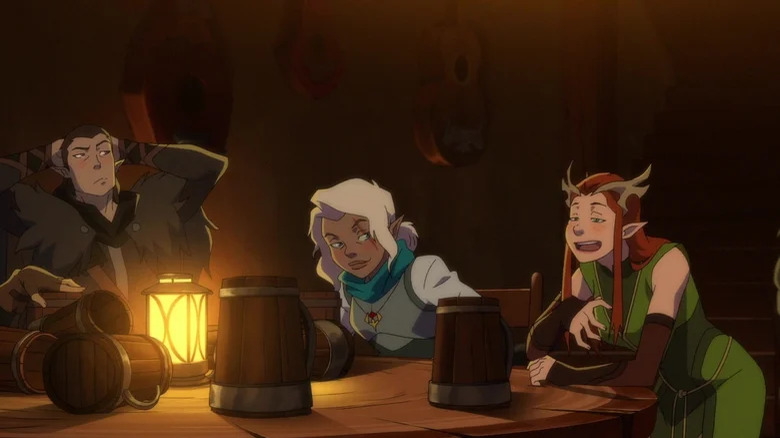
The result is a show that encapsulates the improvised feeling of the original "Critical Role" livestreams, the creative chaos of playing an RPG and the joy of seeing happy accidents result in fun yet unpredictable shenanigans, while still feeling like a scripted series. At a time where every streaming and studio wants their own epic fantasy series, "The Legend of Vox Machina" feels different and unique for how grounded and personal it feels due to its source material, while still being very much a fantasy series with many grand locations, an epic story, and a giant cast of characters voiced by some of the best actors in the business.
The second season of "The Legend of Vox Machina" is streaming on Prime Video, with a third season on the way. A new animated series based on the second "Critical Role" campaign, titled "Mighty Nein," was recently picked up by Prime Video.
Read this next: 14 Underrated Fantasy Shows That Deserve Your Attention
The post How The Legend Of Vox Machina Found New Actors For Matthew Mercer's NPC Roles appeared first on /Film.
Cybercrime Gang Uses Screenlogger to Identify High-Value Targets in US, Germany
A recently identified financially motivated threat actor is targeting companies in the United States and Germany with custom malware, including a screenlogger it uses for reconnaissance, Proofpoint reports.
Tracked as TA866, the adversary appears to have started the infection campaign in October 2022, with the activity continuing into January 2023.
As part of the campaign, which Proofpoint refers to as Screentime, victims are targeted with malicious emails containing an attachment or a URL that leads to the deployment of malware. In some cases, based on the attacker’s assessment of the victim, post-exploitation activity may commence.
In October and November 2022, a small number of companies in the US were targeted with emails carrying Publisher file attachments containing malicious macros.
In November and December, the attackers switched to using URLs leading the intended victims to Publisher files containing macros or to JavaScript files. Some of the emails were seen carrying PDF attachments containing URLs to JavaScript files.
After switching to URLs, the attackers also scaled the campaign, sending thousands or tens of thousands of malicious messages several times per week, targeting thousands of organizations. In January 2023, the email volume increased even more, but the frequency of attacks was reduced, Proofpoint says.
Emails observed in January appeared to use thread hijacking with a ‘check my presentation’ lure to trick recipients into clicking the malicious URLs.
The malicious links lead to the 404 TDS (traffic distribution system) that filters the traffic and redirects the victim to a JavaScript file. If the victim runs the file, a MSI package is fetched and executed, which in turn runs an embedded VBS script and achieves persistence.
The script is the WasabiSeed malware, which downloads and executes another MSI file representing a piece of malware named Screenshotter, and then continues polling the URL for additional payloads.
With variants implemented in different programming languages (including Python, AutoIT, and JavaScript/IrfanView), Screenshotter was designed to take screenshots of the victim’s screen and send them to a command-and-control (C&C) server.
According to Proofpoint, the attackers likely manually inspect the screenshots and use WasabiSeed to deploy additional payloads if the victim is deemed interesting, such as the AHK Bot, which too enters a loop to fetch additional components.
AHK Bot has been observed deploying a script to check the victim machine’s Active Directory (AD) domain and downloading and loading in memory the Rhadamanthys information stealer. The AD profiling, Proofpoint notes, could lead to the compromise of other domain-joined hosts.
Proofpoint has been tracking the use of 404 TDS since September and believes that it is either sold or shared between cybercriminals, as it has been used in various phishing and malware campaigns.
As part of TA866’s Screentime campaign, hundreds of random URLs were used, leading to 20 domains that were registered on the day of the attack.
“These domains were previously registered, expired, and then re-sold to the TDS operator,” Proofpoint notes.
Some parts of the observed attacks involve manual interaction from the threat actor and, based on payload download time, Proofpoint’s security researchers believe that TA866 could be residing in the UTC+2 or UCT+3 time zones. These time zones correspond, among others, to Russia.
Furthermore, the researchers discovered that AHK Bot contains Russian language variable names and comments, and that the malware has been used in attacks since at least 2019, with some of the previous activity seemingly having an espionage objective.
“TA866 is a newly identified threat actor that distributes malware via email utilizing both commodity and custom tools. Most of the activity recently observed by Proofpoint suggests recent campaigns are financially motivated, however assessment of historic related activities suggests a possible, additional espionage objective,” Proofpoint concludes.
Related: North Korean Hackers Created 70 Fake Bank, Venture Capital Firm Domains
Related: Vietnam-Based Ducktail Cybercrime Operation Evolving, Expanding
Related: US Government Agencies Warn of Malicious Use of Remote Management Software
The post Cybercrime Gang Uses Screenlogger to Identify High-Value Targets in US, Germany appeared first on SecurityWeek.
The End of Grading
Read more of this story at Slashdot.
Pedro Pascal and Bella Ramsey dating rumours soar after Leo DiCaprio age comparison
Co-stars of a series or movie franchise are often shipped together, however, we were surprised to hear The Last of Us fans wondering if its leads were in a relationship. We confirm if actors, Pedro Pascal and Bella Ramsey, are dating so that Joel and Ellie can continue their live-action journey together in peace – unless there’s a clicker around.
Gamers were thrilled to see Ellie’s book of puns make an appearance in this week’s episode – which is material straight from the game.
Created by Craig Mazin and Neil Druckmann for HBO and based on the 2013 video game of the same name by Naughty Dog, The Last of Us series follows smuggler Joel who must escort teenager Ellie across a post-apocalyptic America ridden with infected creatures.
Are Pedro Pascal and Bella Ramsey dating?
No, Pedro Pascal and Bella Ramsey are not dating, as the outlandish rumor was fuelled by Leonardo DiCaprio’s time in the spotlight this week.
The Last of Us co-stars were roped into an age comparison on social media, used to demonstrate the age gap between Hollywood star Di Caprio and his rumored new girlfriend, Eden Polani – neither party has confirmed that they are in a relationship.
DiCaprio and Polani have 29 years between them, which Twitter users noted is roughly the same age gap between Pascal and Ramsey.
Since the former Game of Thrones co-stars flaunt the great friendship they have on and off set, this has sparked people to question if they are in a relationship.

The Last of Us episode 5 preview
The Last of Us episode 5, which is yet to receive a title, is scheduled to release on Friday, February 10, 2023, on HBO and HBO Max, moved from its original Sunday night slot to accommodate the Super Bowl.
The episode will debut at 9 pm ET in the United States, however, fans watching in the UK can watch episode 5 at 2 am GMT on Saturday, February 11, 2023.
Episode 5 will see Kansas City ablaze under Kathleen’s search for Henry and Sam, while Joel and Ellie unite with the pair elsewhere.
The Last of Us episode guide and release schedule lets you know when every episode airs, along with titles as they are announced.

By Jo Craig – jo.craig@grv.media
The Last of Us is now showing on HBO and HBO Max.
The post Pedro Pascal and Bella Ramsey dating rumours soar after Leo DiCaprio age comparison appeared first on ForeverGeek.
US Says Chinese Military Behind Vast Aerial Spy Program
China’s balloon that crossed the United States was equipped to collect intelligence signals and was part of a huge, military-linked aerial spy program that targeted more than 40 countries, the Biden administration said Thursday, outlining the scope and capabilities of the huge balloon that captivated the country’s attention before being shot down.
The fleet of balloons operates under the direction of the People’s Liberation Army and is used specifically for spying, outfitted with high-tech equipment designed to collect sensitive information from targets across the globe, the U.S. said. Similar balloons have floated over five continents, it U.S. said.
The statement from a senior State Department official offered the most detail to date linking China’s military to the balloon that traversed the U.S. before being shot down last Saturday over the Atlantic Ocean. The public details are meant to refute China’s persistent denials that the balloon was used for spying, including a claim Thursday that U.S. accusations about the balloon amount to “information warfare” against Beijing.
In Beijing, before the U.S. offered new information, Chinese Foreign Ministry spokesperson Mao Ning repeated her nation’s insistence that the large unmanned balloon was a civilian meteorological airship that had blown off course and that the U.S. had “overreacted” by shooting it down.
“It is irresponsible,” Mao said. The latest accusations, he said, “may be part of the U.S. side’s information warfare against China.”
China’s defense minister refused to take a phone call from Defense Secretary Lloyd Austin to discuss the balloon issue on Saturday, the Pentagon said. China has not answered questions as to what government department or company the balloon belonged to, or how it planned to follow up on a pledge to take further action over the matter.
The U.S. offered a flatly contradictory characterization of the balloon and its purpose. It said imagery of the balloon collected by American U-2 spy planes as it crossed the country showed that it was “capable of conducting signals intelligence collection” with multiple antennas and other equipment designed to upload sensitive information and solar panels to power them.
The official said an analysis of the balloon debris was “inconsistent” with China’s explanation that it was a weather balloon that went off course. The U.S. is reaching out to countries that have also been targeted, the official said, to discuss the scope of the Chinese surveillance program, and is looking into potential action that “supported the balloon’s incursion into U.S. airspace.”
The official provided details to reporters by email on condition of anonymity due to the sensitive nature of the matter, which had already forced the cancellation of a planned visit to China earlier this week by Secretary of State Antony Blinken.
The official said the U.S. has confidence that the manufacturer of the balloon shot down on Saturday has “a direct relationship with China’s military and is an approved vendor of the” army. The official cited information from an official PLA procurement portal as evidence for the connection between the company and the military.
This is not the first time the U.S. government has publicly called out alleged activities of the People’s Liberation Army. In a first-of-its-kind prosecution in 2014, the Obama administration Justice Department indicted five accused PLA hackers of breaking into the computer networks of major American corporations in an effort to steal trade secrets.
Alleged hackers with the PLA were also charged in 2020 with stealing the personal data of tens of millions of Americans in a breach of the credit-reporting agency Equifax.
The post US Says Chinese Military Behind Vast Aerial Spy Program appeared first on SecurityWeek.
Resident Evil 4 Remake directors “didn’t want to do it”
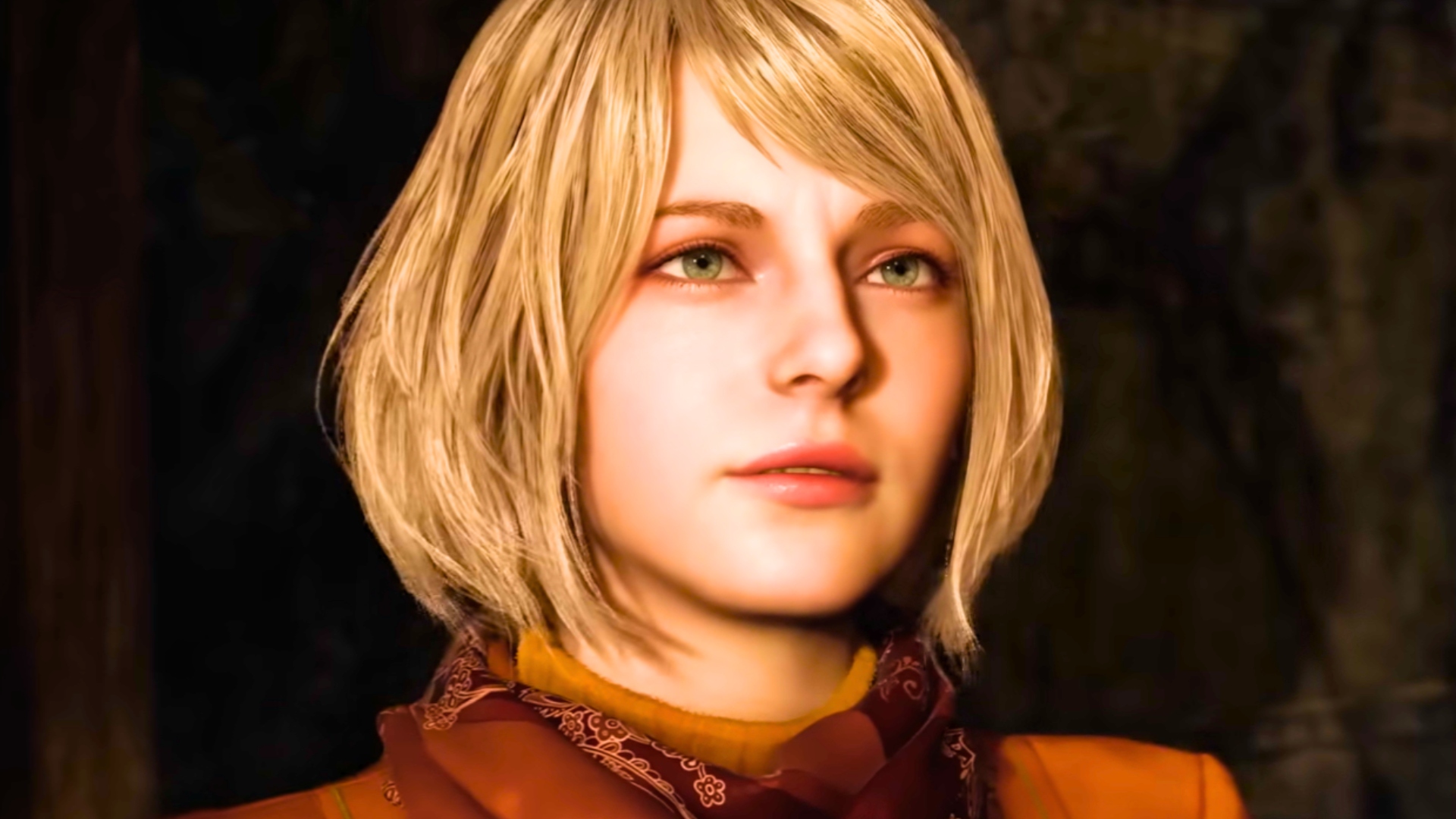
The directors of the upcoming Resident Evil 4 Remake apparently had some big reservations about reimagining the classic Capcom horror game, with the original tale of Leon Kennedy taking on the Las Plagas presenting so little room for improvement, it made the prospect of a new RE4 pretty daunting. Rest assured, though; as we approach the Resident Evil 4 release date, the creators say they have found a way to make it work.
Bob Iger Lays Out Disney's Future: Streaming, Savings, And Franchises To The Rescue
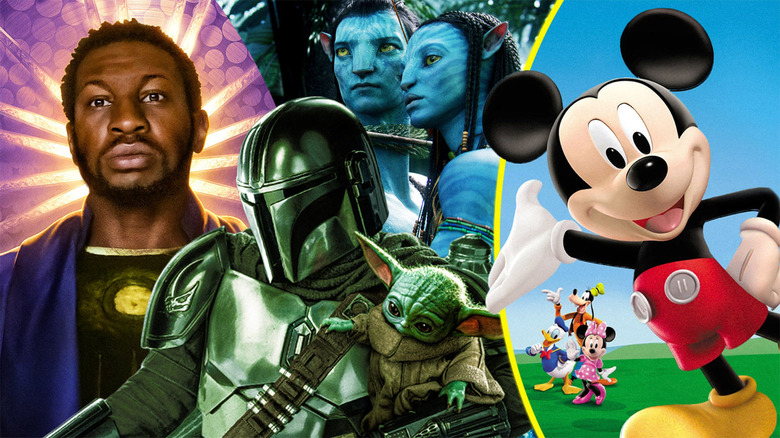
Disney shocked the business world when it was announced in November 2022 that CEO Bob Iger, who led the company to heights it had never seen before, was returning to his post. Bob Chapek, who had taken over for him in 2020, was out after a tumultuous, short tenure. Iger had his first big return to the spotlight recently as Disney held its first quarterly earnings call following the executive's return, with much pressure to steer the ship in the right direction. Iger wasted no time in making big, drastic changes, particularly in light of the fact that Disney+ lost subscribers for the first time since its launch (2.4 million of them, to be exact).
The company did, overall, beat expectations with reported revenues of $23.5 billion, up 8% from a year ago. Iger was welcomed with open arms and Wall Street has responded kindly to what he laid out; Disney's stock was up nearly 3% the morning following the call. During the Q&A portion of the call, the theme of "Welcome back, Bob" emerged. The response was warm, so much so that activist investor Nelson Peltz, who had been in a proxy fight looking to get a board seat, dropped his case. "We wish the very best to Bob, this management team and the board. We will be watching. We will be rooting," Peltz said to CNBC.
Brutal though elements of Iger's sweeping changes may be, what he's saying is working so far. Iger has completely reorganized the company into three divisions: Disney Entertainment, which houses most of the streaming and media operations; Parks, Experiences and Products; and ESPN. This all but dismantled everything Chapek had done in his stead. Overall, much of what the CEO (who has two years to find a successor) wants to do boils down to focusing on streaming, finding savings, and leaning into big franchises.
The Future Is Still Streaming
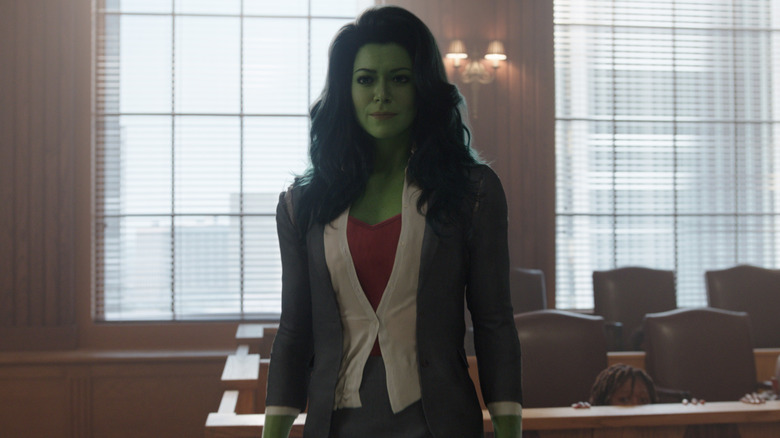
One of the biggest issues legacy media companies like Disney are facing right now is the fact that cord cutting is accelerating, leading to a decline in traditional, linear TV. As evidence of that, Disney's linear networks such as ABC saw revenue of $7.3 billion, in the most recent quarter, down 5% from a year ago. Meanwhile, the direct to consumer business, aka streaming, saw revenues of $5.3 billion, up 13% from a year ago. The writing is on the wall: streaming is the future and, even though the transition may be rough, Bob Iger knows this, and he said as much on the call:
"There's a lot to accomplish. But let me be clear, this is my number one priority. We're focused on the success of our streaming business and the return it generates for our shareholders long into the future. The streaming business, which I believe is the future and has been growing, is not delivering the kind of profitability or bottom-line results that the linear business delivered for us over all over a few decades. And so we're in a very interesting transition period, but one I think, is inevitably heading towards streaming."
Iger also discussed the "global arms race for subscribers," which led to heavy investment in the early years of Disney+. Case in point, streaming accounted for $1.1 billion in losses in the most recent quarter, though Disney+ still has eyes on reaching profitability in 2024. "In our zeal to go after subscribers, I think we might have gotten a bit too aggressive in terms of our promotion. We took our pricing up substantially on Disney+ and [...] we only suffered a de minimis loss of subs. That tells us something," Iger said.
What About ESPN+ And Hulu?
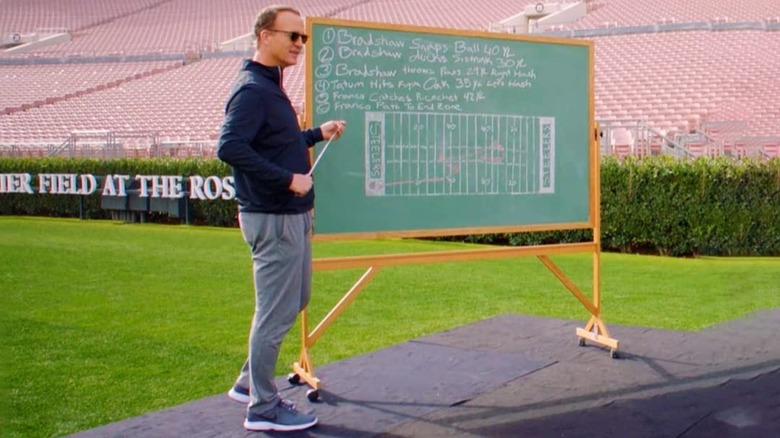
Disney+ isn't the only streaming concern that Disney has. The company also has ESPN+, which has grown to 25 million subscribers to date, as well as Hulu, which it took full control of shortly after the Fox acquisition in 2019. But, as mentioned, traditional TV is declining, and that is where ESPN has its roots set. So, is the plan to pivot the sports giant to a pure streaming play in the future? Bob Iger tackled that head-on, saying, "We're going to continue to look at that as a potential pivot for ESPN away from the linear business, but we're not going to do that precipitously, we're not going to do that until it makes economic sense."
In other words, for now, it makes sense to have linear TV as part of the equation, but that's why the goal is to grow the streaming business now so that, when the time comes, they will be prepared for that pivot. As for Hulu? Things are tricky currently. While Disney controls the service, Comcast still owns one third of it. Disney will either need to buy that stake from Comcast for at least $27.5 billion, or sell the service to someone else. Addressing this after the call in a chat with CNBC, Iger said the following:
"Everything is on the table right now, so I am not going to speculate whether we are a buyer or a seller of it. But I obviously have suggested that I'm concerned about undifferentiated general entertainment, particularly in the competitive landscape that we are operating in, and we are going to look at it very objectively and expansively."
Iger, when pressed, said Disney would be "open minded" if Comcast wanted to buy Hulu, rather than have Disney buy the remaining third of it.
Savings, Even If They Come Through Brutal Means
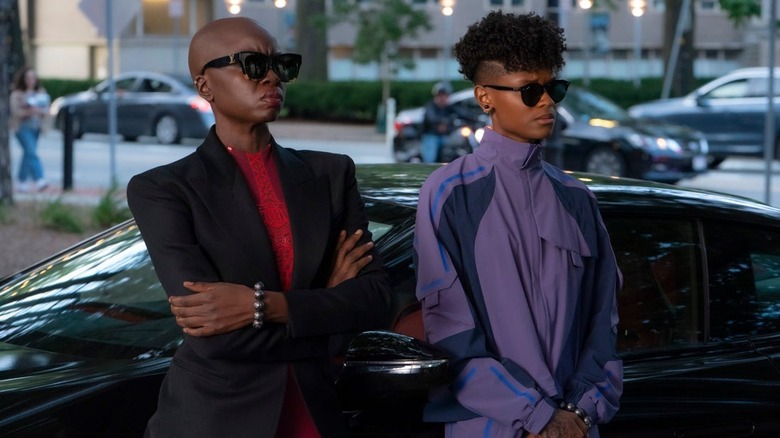
Hulu is caught right in the middle of two pillars Bob Iger has set up: streaming as the future, and strict measures being put in place to make way for big savings. Cost-cutting is coming, and it's coming fast. Iger said the idea is to "reduce costs on everything that we make." The fact of the matter is that Disney has around $48 billion in debt (much of that coming from the pricey Fox acquisition), and they need to find ways to get the company's finances in order. So a $27.5 billion purchase might be a tough sell, even if it does align with the "streaming is our future" mentality.
But Iger isn't wasting any time because in the right here and right now, he intends to find $5.5 billion in overall savings, including $3 billion in non-sports content savings. So, for as much as everyone was mad at Warner Bros. Discovery for its brutal cost-saving efforts, this is a larger industry trend, rather than an isolated incident. The era of "spend for subscribers at all costs" is very much over.
As a further, more brutal cost-saving measure, Disney intends to cut 7,000 jobs, or around 3% of its total workforce. Much of this has to do with the reorganization mentioned earlier, which dismantled the Disney Media & Entertainment Distribution (DMED) structure that had been set up by Bob Chapek. Iger had this to say about the reorganization:
"Our new structure is aimed at returning greater authority to our creative leaders and making them accountable for how their content performs financially. Our former structure severed that link and must be restored. Moving forward, our creative teams will determine what content we're making, how it is distributed and monetized, and how it gets marketed."
Franchises, Franchises, Franchises
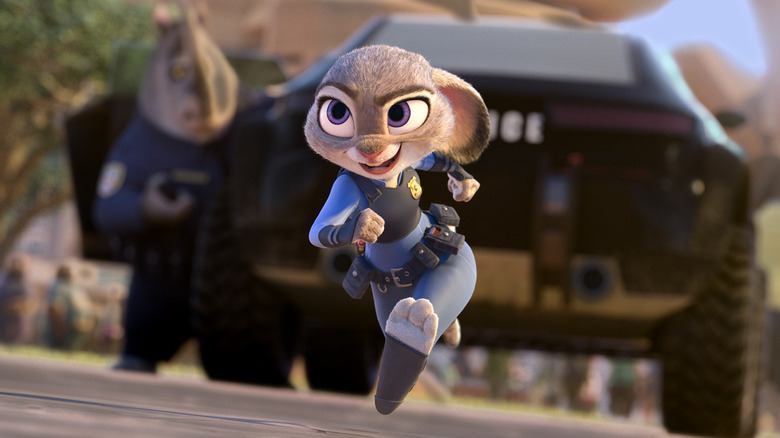
Disney is still going to be spending lots of money, "in the low $30 billion range" on content for the year. Where is all that money going? Addressing savings, the executive said it's going to come down to being more deliberate about what they're making, and how much they're spending on it:
"We are going to take a really hard look at the cost for everything that we make, both across television and film. Because things in a very competitive world have just simply gotten more expensive, and that's something that is already underway here. In addition, we're going to look at the volume of what we make. And with that in mind, we're going to be fairly aggressive at better curation when it comes to general entertainment."
In short, expect less overall volume when it comes to movies and TV shows. So, if not quantity, then quality? For Disney, that perceived quality comes from its big franchises, such as Marvel, "Star Wars," and much of what exists under Pixar's umbrella. Bob Iger was very clear about the fact that they are going to focus heavily on franchises, stating, "We will focus even more on our core brands and franchises, which have consistently delivered higher returns." While few details were revealed, sequels to "Zootopia," "Toy Story," and "Frozen" were announced as evidence of this commitment.
In fairness, "Zootopia" made $1 billion at the box office in 2016. It's frankly surprising it took this long to get a sequel. "Frozen II" made $1.43 billion, making it one of the highest-grossing movies ever. Meanwhile, "Toy Story," across four movies, has generated $5.25 billion in ticket sales (not counting "Lightyear"). So yeah, maybe it's not original, but it's not hard to see why these are logical business decisions.
In Conclusion
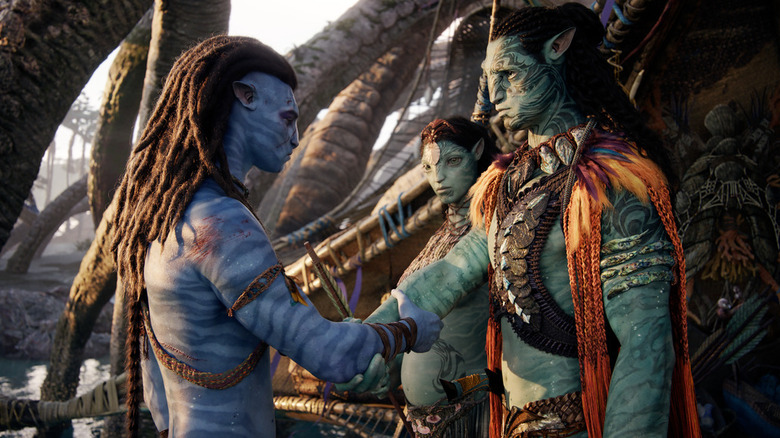
This all might seem like a mixed bag for onlookers and fans of the Mouse House. Sure, moviegoers might say they want more original movies and fewer sequels. Yet, Bob Iger simply looked at how badly "Strange World" bombed and is asking, "Do you really?" That's also why they are going to be giving "Avatar" a stronger presence at the Disney parks, now that "The Way of Water" is one of the highest-grossing movies ever. Disney, particularly under Iger, has leaned into franchises better than anyone in the business. From a business perspective, why lean away from that now?
Yes, the layoffs are brutal, but the industry is in a period of transition. Between the streaming wars and the pivot away from traditional TV, consumers are having to make tough choices and revenue will be impacted greatly in the near future. Disney has to do what it must to be one of the players still standing when the dust settles because, rest assured, some companies, as they exist, aren't going to make it. Iger, despite how remorseless some of this may seem, is attempting to get his house in order using the best information available. And, in fairness, this man's track record is pretty damn good. Let's see what the remainder of his two-year return brings with it.
Read this next: The 20 Most Underrated Disney Movies You Need To See
The post Bob Iger Lays Out Disney's Future: Streaming, Savings, And Franchises To The Rescue appeared first on /Film.
All of last night's Nintendo Direct games that are also coming to PC
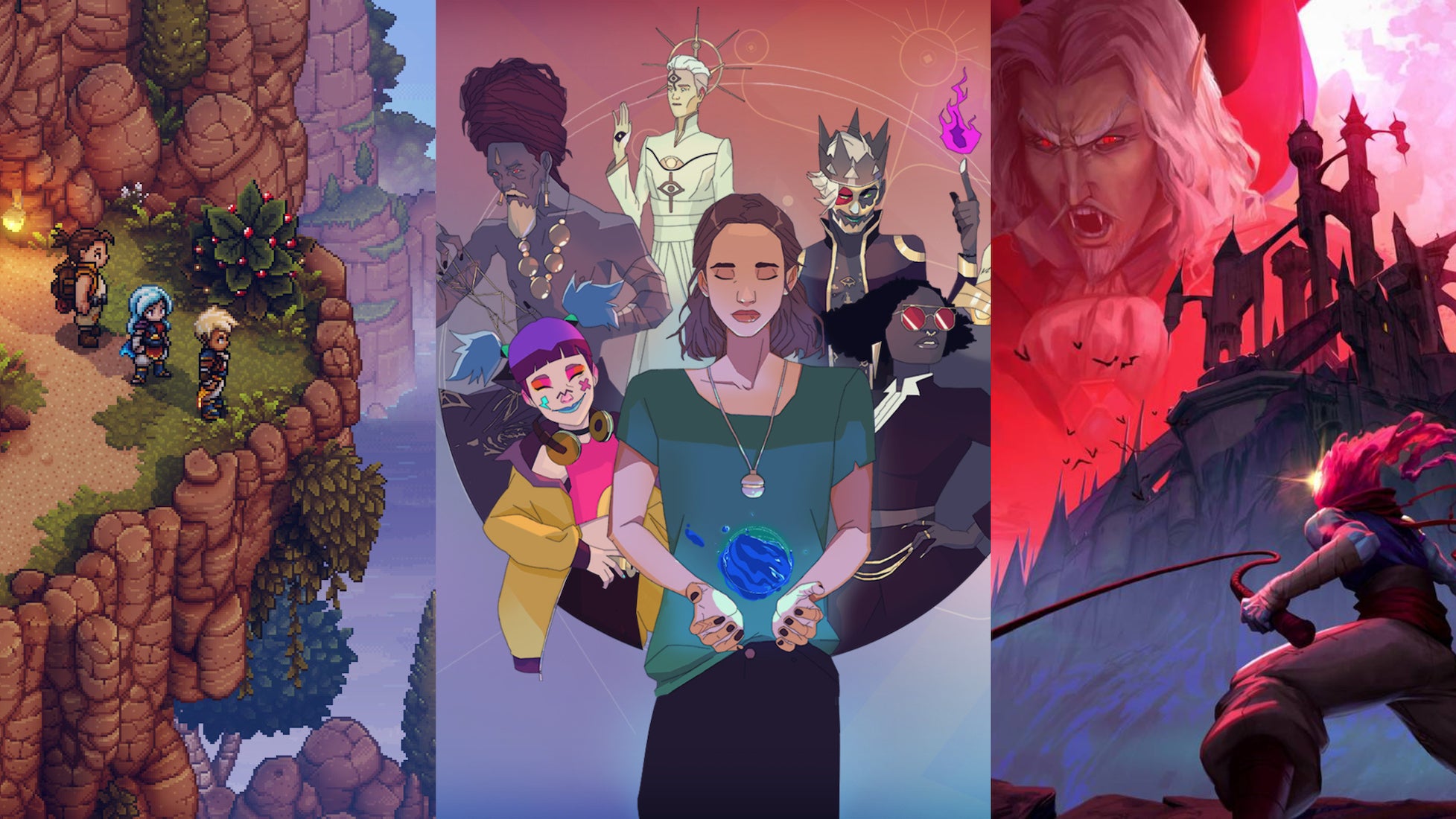
As a PC player, watching Nintendo Directs can be finicky business. Everything simply has a Switch logo, so how do you know what to be excited for? We hear your (very important) woes, so we’ve compiled every PC game featured in last night’s direct. There were plenty of goodies coming to PC including paranormal detectives, retro throwbacks, a new game from Don’t Nod, and more. So let’s get started.
Critical Infrastructure at Risk from New Vulnerabilities Found in Wireless IIoT Devices
Luther: The Fallen Sun Trailer: Idris Elba Hunts A Diabolical Andy Serkis
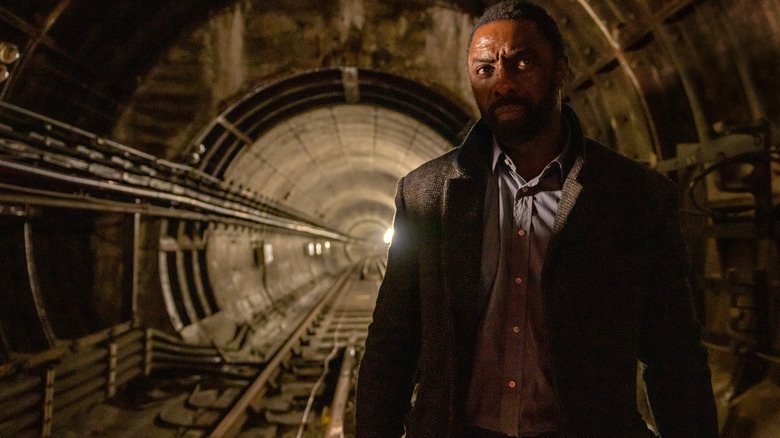
Don't you hate it when this happens? One day, you're the most brilliant and prolific detective in the Serious Crime Unit, hunting down the most sadistic killers out there while trying to keep a marriage running on fumes. The next, your arch nemesis-turned-uneasy ally appears to die in front of you by your hand and you find yourself behind bars for breaking the law one too many times in the pursuit of justice. That's the trajectory experienced by good ol' John Luther, played by Idris Elba in the critically acclaimed BBC series that run from 2010 to 2019. But there's no way that fans could've been expected to make do with that tantalizing cliffhanger and call it a day ... right?
Well, after years of rumors and reports about plans to put a spin-off movie into production, that's finally happened with the impending release of the new Netflix movie, "Luther: The Fallen Sun." The film sees Elba back in action as the tortured copper, notably not in jail anymore and ready to dance with yet another highly dangerous and probably sociopathic criminal. In his defense, we'd have done the exact same thing knowing that criminal would be played by Andy Serkis.
The synopsis is as follows:
In "Luther: The Fallen Sun" — an epic continuation of the award-winning television saga reimagined for film — a gruesome serial killer is terrorizing London while brilliant but disgraced detective John Luther (Idris Elba) sits behind bars. Haunted by his failure to capture the cyber psychopath who now taunts him, Luther decides to break out of prison to finish the job by any means necessary.
The streaming service has released a brand-new trailer giving us our first extended look at the action to come, which you can watch below!
Check Out The Trailer For Luther: The Fallen Sun
Are you a lifelong "Luther" fan or simply here for Idris Elba kicking some serious butt? Either way, this movie is for you! Original series creator Neil Cross returns to pen the screenplay for the film, which is directed by longtime television director Jamie Payne ("Luther," "The Alienist," "Outlander"), but by all accounts the film will be geared towards fans of any level of previous attachment to the series. According to Total Film's January 2023 issue of their print magazine, Payne goes out of his way to point out:
"It was important to all of us that we absolutely want to bring the fans along, and for them to know that this story sits within a canon of so many other stories. But also you could come at it not having seen a single episode of 'Luther,' and absolutely know where you stood."
That's great news for those who may be a little pressed for time to catch up on all 20 episodes of the previous five seasons of the series, though it's also clear that longtime fans will get to see their commitment rewarded with all manner of Easter eggs, deep cuts, and careful consideration of prior canon. This is a version of Luther who's seen some serious, well, you know. And viewers can expect to see even more of the same grizzled copper they know and love, as Cross also told Total Film that, among other things, "That's part of the reason why I'm so addicted to using slightly antediluvian London slang, rather than cool, hip words -- I love putting the words 'tickety-boo' or 'wotcha' into Idris Elba's mouth."
Good ol' Luther, never change! "Luther: The Fallen Sun" will open in select theaters on February 24, 2023, before streaming on Netflix two weeks later, starting March 10.
Read this next: The 18 Best Crime Dramas In TV History
The post Luther: The Fallen Sun Trailer: Idris Elba Hunts A Diabolical Andy Serkis appeared first on /Film.
Half-Life has better writing than Half-Life 2, for one simple reason
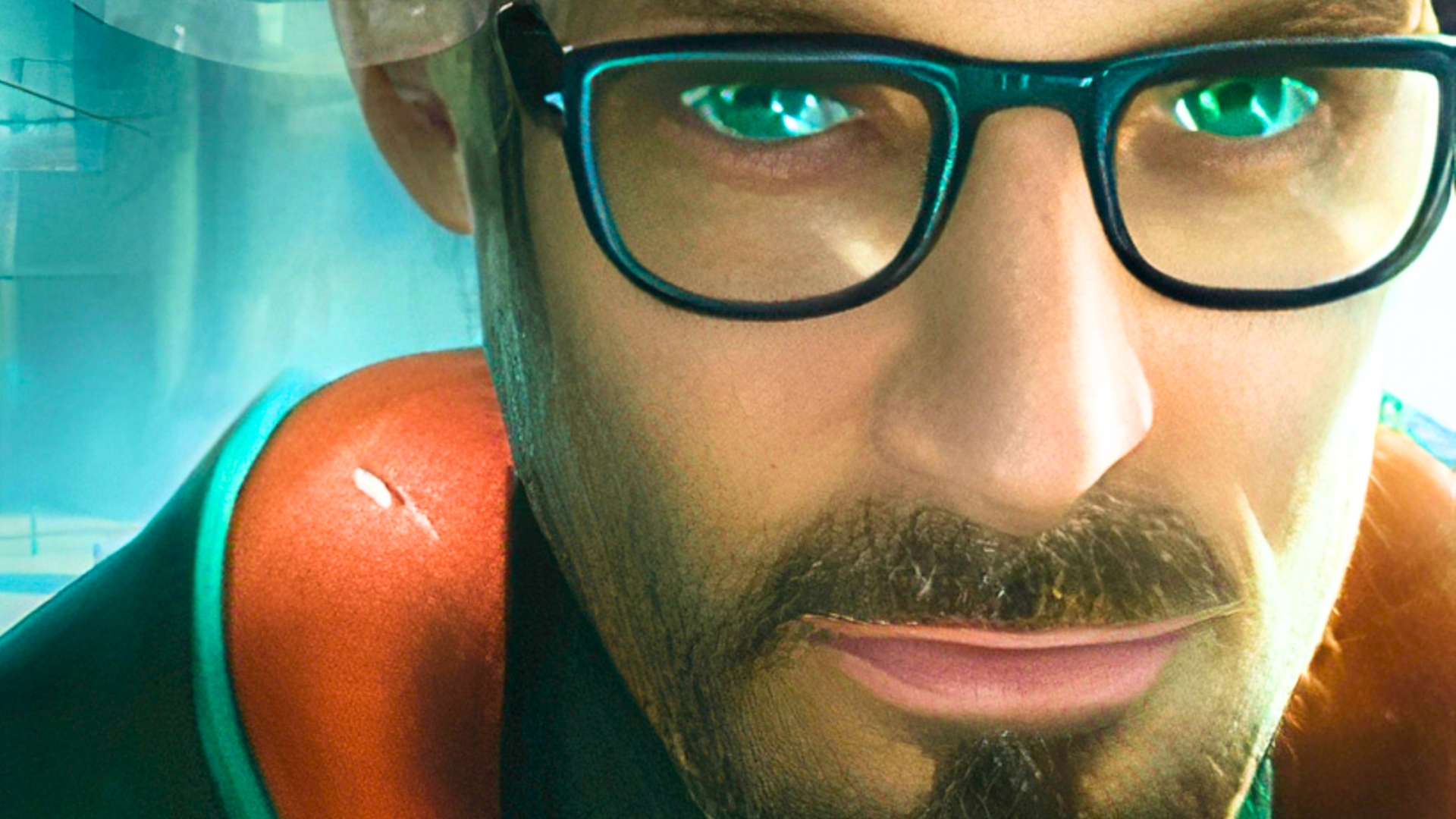
There is a fantastic moment in Half-Life 2, during the ‘Water Hazard’ section of Valve's FPS game, when you first arrive at one of the resistance outposts, Station 12. Previously, you – or, if you prefer, Gordon Freeman – have been told that communications with Station 12 have mysteriously ceased. Overlooking City 17’s irradiated river, the Station is supported on stilts. Immediately, you know that something is wrong. The river is silent. No-one exits the Station to greet you. A large wooden container dangles ominously from a pulley – the grand piano over Buster Keaton’s head; some stark realisation just waiting to drop.
Metroid Prime Remastered Already Runs Beautifully at 4K@60 on Nintendo Switch PC Emulators

Nintendo gave its fans an incredibly nice gift with the shadow drop release of Metroid Prime Remastered following yesterday's Nintendo Direct announcement.
The first video comparison with previous Metroid Prime releases already highlights significant improvements. However, PC gamers willing to use Nintendo Switch PC emulators like Yuzu can get an even bigger graphics upgrade.
Not only does Metroid Prime Remastered already run on the emulator, but it does so beautifully at 4K resolution and near-locked 60 frames per second, as shown by YouTuber Emulators & Gameplay HD. For the record, the video was captured on a PC featuring the following specifications:
- CPU: i9-13900K (Stock)
- GPU: MSI NVIDIA RTX 3080 Ti
- RAM: 32GB DDR5 5200
- Operating System: Windows 11
Metroid Prime Remastered also runs on Ryujinx, the other major Nintendo Switch PC emulator, as shown in the video below.
That's not to say either version is perfect, of course. There are still crashes and bugs to contend with, but chances are they'll be resolved soon enough.
Metroid Prime Remastered is now available digitally via the Nintendo eShop at $39.99. A physical release will be available through retailers on March 3rd.
With revamped graphics, sound, unlockable art, and updated control schemes, Samus’ 3D debut has reached even greater heights. Use new dual-stick controls, intuitive motion aiming, revert to classic controls, or opt for a hybrid option – whichever you prefer.
The post Metroid Prime Remastered Already Runs Beautifully at 4K@60 on Nintendo Switch PC Emulators by Alessio Palumbo appeared first on Wccftech.
Bob Iger Announces 7,000 Layoffs As Disney+ Loses Subscribers
Read more of this story at Slashdot.
GeForce Game Ready Driver 528.49 Unlocks Full Potential for 40 Series Laptops; DLSS Optimization for PERISH and Hello Neighbor 2

A new NVIDIA GeForce Game Ready Driver has been released today. This new driver (528.49) unlocks the full potential of the GeForce RTX 40 Series laptops, starting with RTX 4090 and 4080 models that will be launched today. With this, the RTX series GPUs found in these laptops will have their potential fully unlocked to let them become the world's fastest for users to game with.
Additionally, the Game Ready Driver will also bring optimizations for Hello Neighbor 2, which will receive an update that will add DLSS 2, Ray-Traced Reflections, Ray-Traced Shadows, and RTXGI Ray-Traced global illumination come February 17. What's more, PERISH will also benefit from the accelerated performance brought by DLSS 3 and DLSS 2, allowing players to enhance the action with ray-traced reflections and shadows while increasing performance thanks to NVIDIA Reflex.
If you haven't kept up with the news, PERISH's addition makes a grand total of 25 games that now support DLSS 3, all of which can be played today. This adds the shooter to the list of supported titles such as Deliver Us Mars, Destroy All Humans! 2 - Reprobed, Hitman 3, and, of course, Portal with RTX.
Speaking of NVIDIA Reflex, this latest Game Ready Driver will also add support for this feature on World of Warcraft. Additionally, the latest driver will also add Day-0 optimizations for Company of Heroes 3 alongside the addition of GeForce Experience Optimal settings for 5 new games. Here's the list of games that will have Optimal Settings:
- Dead Space
- Dual Universe
- Goat Simulator 3
- Paragon: The Overprime
- STALCRAFT
Finally, the latest Game Ready Driver will also add support for ten new G-SYNC compatible gaming displays. Here are the displays that will have support after this driver is installed:
- AOC PD32M
- ASUS XG32AQ
- ASUS XG27AQV
- IO-Data GCQ271HA
- Lenovo Y27-30
- LG 27GR950
- LG 45GR95QE
- MSI G321Q
- ViewSonic VX2781-2K-Pro/2
- ViewSonic VX2781-4K-Pro
The GeForce Game Ready Driver 528.49 WHQL is currently available for download for all NVIDIA graphics card users. All you have to do is download the driver through GeForce NOW. You can also manually install the driver through NVIDIA's website.
The post GeForce Game Ready Driver 528.49 Unlocks Full Potential for 40 Series Laptops; DLSS Optimization for PERISH and Hello Neighbor 2 by Ule Lopez appeared first on Wccftech.
Spies, Hackers, Informants: How China Snoops on the US
An alleged Chinese surveillance balloon over the United States last week sparked a diplomatic furore and renewed fears over how Beijing gathers intelligence on its largest strategic rival.
FBI Director Christopher Wray said in 2020 that Chinese spying poses “the greatest long-term threat to our nation’s information and intellectual property, and to our economic vitality”.
China’s foreign ministry said in a statement to AFP that it “resolutely opposed” spying operations and that American accusations are “based on false information and sinister political aims”.
The United States also has its own ways of spying on China, deploying surveillance and interception techniques as well as networks of informants.
Former US president Barack Obama said in 2015 that his Chinese counterpart Xi Jinping had promised not to conduct commercial cyber spying. Subsequent statements by Washington have indicated the practice has continued.
Here are some of the ways Beijing has worked to spy on the United States in recent years:
Cyber warfare
The United States warned in a major annual intelligence assessment in 2022 that the Asian giant represents “the broadest, most active, and persistent cyber espionage threat” to the government and private sector.
According to researchers and Western intelligence officials, China has become adept at hacking rival nations’ computer systems to make off with industrial and trade secrets. In 2021, the United States, NATO and other allies said China had employed “contract hackers” to exploit a breach in Microsoft email systems, giving state security agents access to emails, corporate data and other sensitive information.
Chinese cyber spies have also hacked the US energy department, utility companies, telecommunications firms and universities, according to US government statements and media reports.
Tech fears
Fears of the threat from Beijing have seeped into the technology sector, with concerns that state-linked firms would be obliged to share intel with the Chinese government.
In 2019, the US Department of Justice charged tech giant Huawei with conspiring to steal US trade secrets, evade sanctions on Iran, and other offenses.
Washington has banned the firm from supplying US government systems and strongly discouraged the use of its equipment in the private sector over fears that it could be compromised.
Huawei denies the charges.
Similar anxiety over TikTok animates Western political debate, with some lawmakers calling for an outright ban on the hugely popular app developed by China’s ByteDance over data security fears.
Industrial and military espionage
Beijing has leaned on Chinese citizens abroad to help gather intelligence and steal sensitive technology, according to experts, US lawmakers and media reports.
One of the most high-profile cases was that of Ji Chaoqun, who in January was sentenced to eight years in a US prison for passing information on possible recruitment targets to Chinese intelligence.
An engineer who arrived in the United States on a student visa in 2013 and later joined the army reserves, Ji was accused of supplying information about eight people to the Jiangsu province ministry of state security, an intelligence unit accused of engaging in the theft of US trade secrets.
Last year, a US court sentenced a Chinese intelligence officer to 20 years in prison for stealing technology from US and French aerospace firms.
The man, named Xu Yanjun, was found guilty of playing a leading role in a five-year Chinese state-backed scheme to steal commercial secrets from GE Aviation, one of the world’s leading aircraft engine manufacturers, and
France’s Safran Group.
In 2020, a US court jailed Raytheon engineer Wei Sun — a Chinese national and naturalized US citizen — for bringing sensitive information about an American missile system into China on a company laptop.
Spying on politicians
With the goal of advancing Beijing’s interests, Chinese operatives have allegedly courted American political, social and business elites.
US news website Axios ran an investigation in 2020 claiming that a Chinese student enrolled at a university in California had developed ties with a range of US politicians under the auspices of Beijing’s main civilian spy agency.
The student, named Fang Fang, used campaign financing, developed friendships and even initiated sexual relationships to target rising politicians between 2011 and 2015, according to the report.
Police stations
Another technique used by Chinese operatives is to tout insider knowledge about the Communist Party’s opaque inner workings and dangle access to top leaders to lure high-profile Western targets, researchers say.
The aim has been to “mislead world leaders about (Beijing’s) ambitions” and make them believe “China would rise peacefully — maybe even democratically,”
Chinese-Australian author Alex Joske wrote in his book, “Spies and Lies: How China’s Greatest Covert Operations Fooled the World”.
Beijing has also exerted pressure on overseas Chinese communities and media organizations to back its policies on Taiwan, and to muzzle criticism of the Hong Kong and Xinjiang crackdowns.
In September 2022, Spain-based NGO Safeguard Defenders said China had set up 54 overseas police stations around the world, allegedly to target Communist Party critics.
Beijing has denied the claims.
The Netherlands ordered China to close two “police stations” there in November.
A month later, the Czech Republic said China had closed two such centers in Prague.
The post Spies, Hackers, Informants: How China Snoops on the US appeared first on SecurityWeek.




